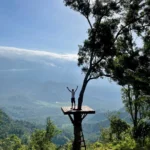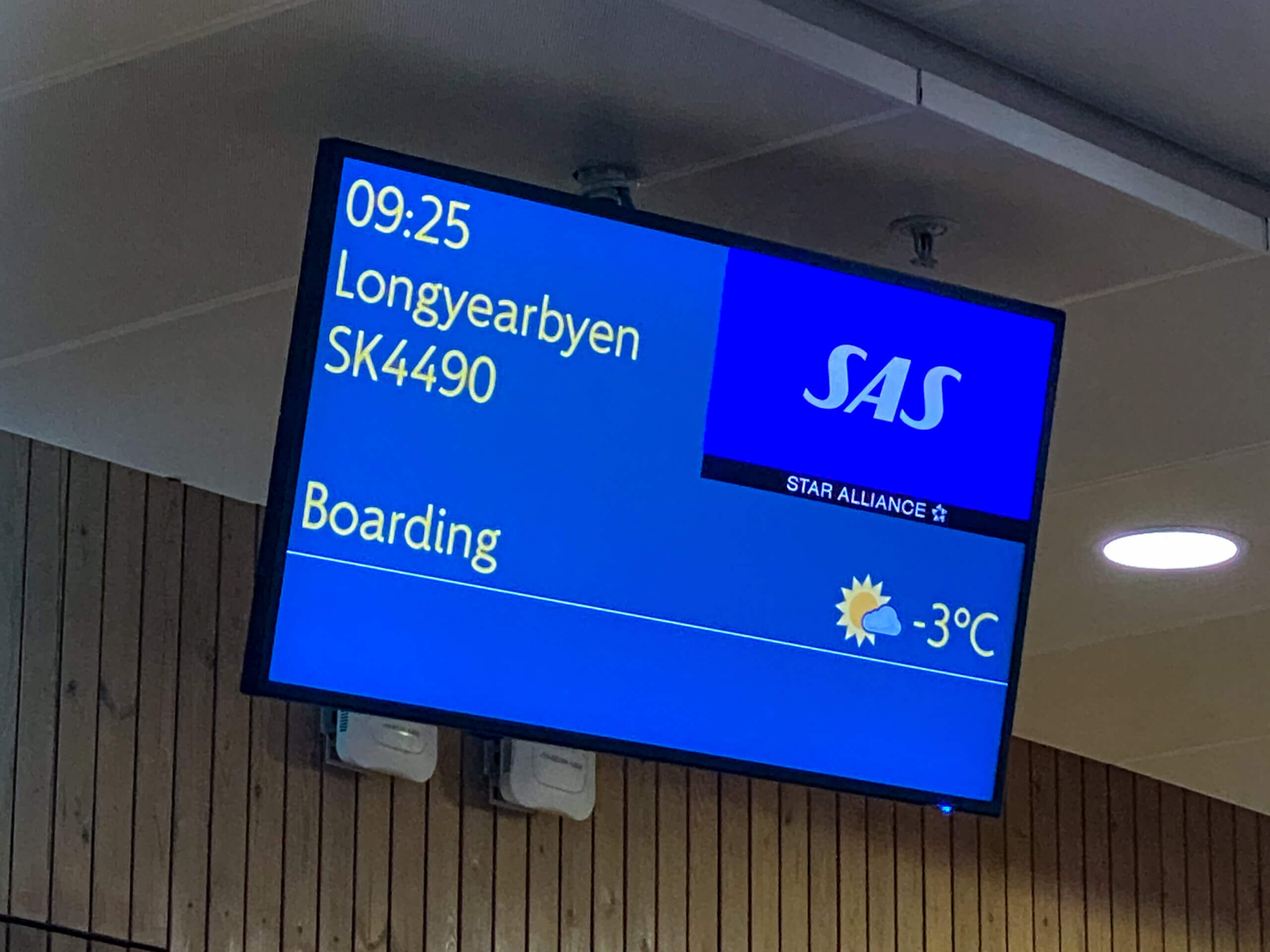
This trip was originally planned for January 2022, but I tested positive for Covid on my layover in Oslo (after testing negative in Germany before my flight) and was sent to an isolation hotel for six days. Now, ten months later, I finally made it Svalbard.
Longyearbyen: Location and History
Longyearbyen is located on Spitsbergen Island in Norway's Svalbard archipelago. Situated at a latitude of 78.223° N, it is considered the northernmost inhabited settlement in the world. For reference, 78° N is a mere 817 miles (1,316 km) from the North Pole! Svalbard's population fluctuates throughout the year, but averages around 2,500.
Longyearbyen, previously called Longyear City, was founded over 100 years ago in 1907. It was established and named after American businessman John Munro Longyear (from Lansing, Michigan). In 1906, he opened up Arctic Coal Company and that is where the town's long history with coal mining started. The coal mine was operated by the American company until 1916 when it was bought by Norway's Store Norske. Due to the mining industry, Longyearbyen, even to this day, is home to 40+ nationalities. Norwegians are the majority followed by Russians, Thais, Swedes, Filipinos, and Ukrainians.
In the last several decades, mines have been gradually closing (the last was scheduled to close in 2023, but due to the current global situation, the closure has been delayed to 2025) and the town has diversified from being a purely mining town. During the 1990s, Longyearbyen saw the opening of a shopping mall, fuel station, and hotel. In the fall of 1993, the University Centre in Svalbard (UNIS) opened. To this day, UNIS provides Arctic studies to students from around the world.
In 2008, the Svalbard Global Seed Vault opened its doors. The vault, built deep into the permafrost of a mountainside, in a sense acts like a traditional bank. However, instead of storing money, it stores duplicate crop seeds from countries around the world. This long-term storage ensures that in case of any unforeseen circumstances (e.g., accidents, natural disasters, mismanagement, etc.), there is a backup of the world's food supply. If you're interested in learning more about the seed vault, check out this video which gives you an inside look and tells which country has made the only withdrawal to date.
Due to the threat of polar bears, there are strict laws on where and how you can travel. As shown in the map below, once you are outside of the pink shaded area, you must carry polar bear protection with you (e.g., rifle, flare gun). Although, polar bear attacks here are rare, they do happen. The last occurrence was in 2020 where a Dutch citizen was attacked and killed in his tent just outside of town.
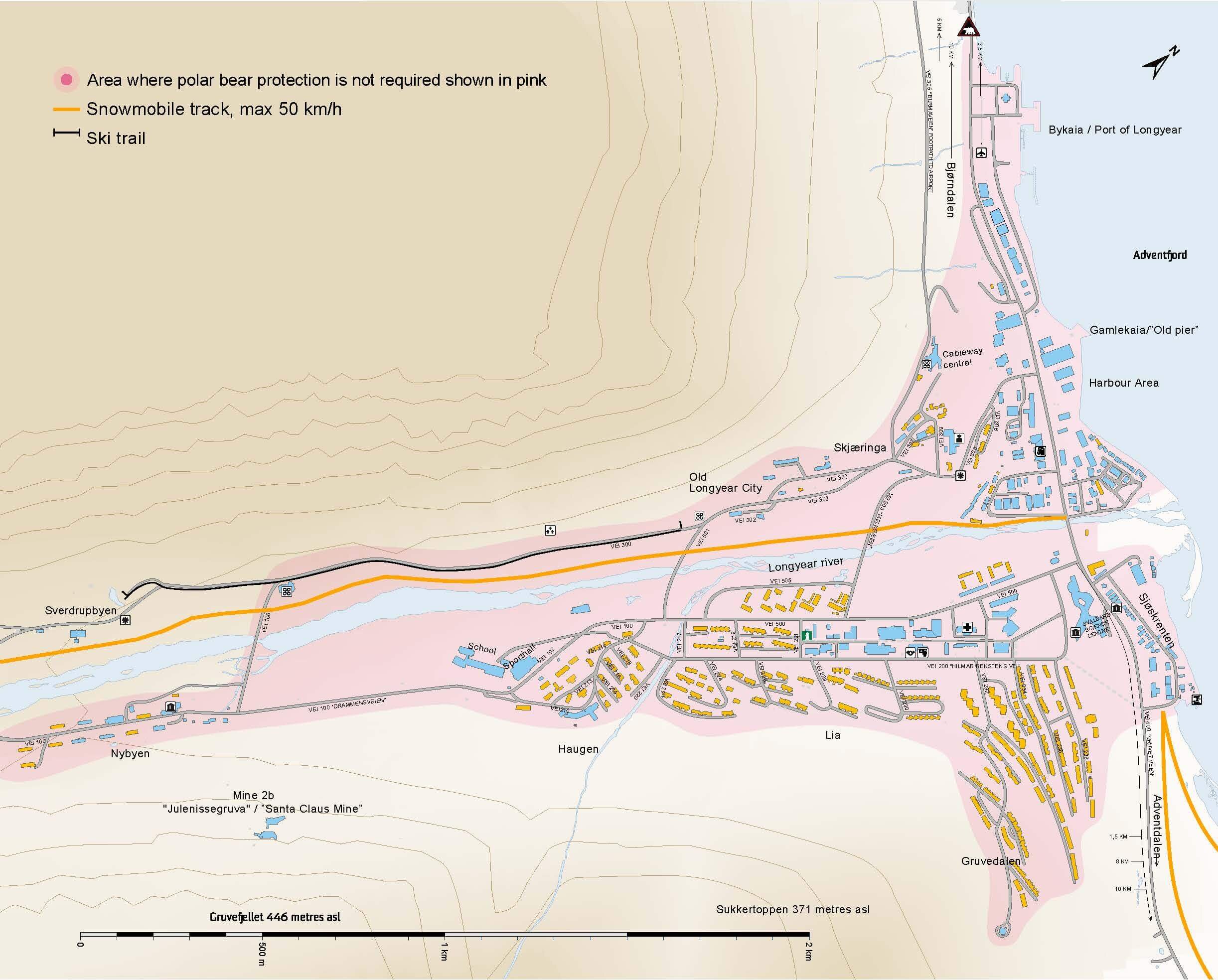
Interesting facts:
- Anyone can live and work on Svalbard as it is an entirely visa-free zone. However, since the only flights in and out are typically from Norway you may need a visa to get there.
- "Polar Night" is from mid-November through January. During this 2.5 month stretch, the sun doesn't rise and it is pitch black 24/7.
- Due to the complete darkness during the polar night, this is the only city in the world you can see the Northern Lights at any time during the day.
- Cats are prohibited on Svalbard (to protect the local fauna)
- No one can be buried on Svalbard. Due to the constant permafrost, it was discovered in the 1950s that bodies from the 1918 flu pandemic were not decomposing which raised concerns they may still contain the virus.
- Anyone deemed terminally ill is required to move to the mainland (for the reason above).
- Pregnant women must go to the mainland weeks before their scheduled delivery date as there is no maternity ward on the island.
Day 1
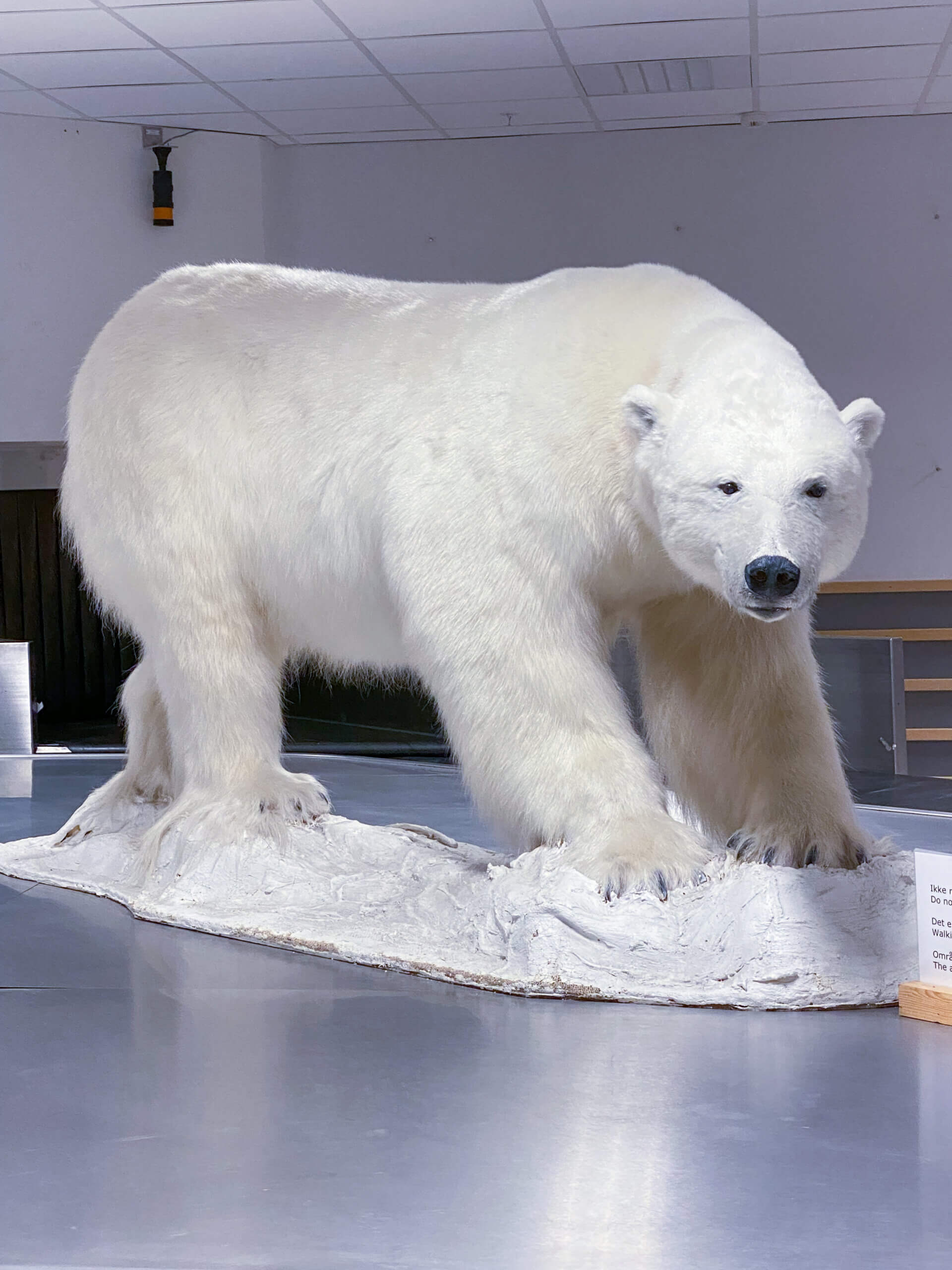 As I step off the plane at 12:25 PM into the complete darkness (aside from the airport lights), it sets in that I will not see daylight for the next five days. While it is not for everyone, and takes some getting use to, there is something special and cozy about the polar night. After picking up my bag from the sole baggage carousel, guarded by a polar bear, I take the shuttle to the hotel.
As I step off the plane at 12:25 PM into the complete darkness (aside from the airport lights), it sets in that I will not see daylight for the next five days. While it is not for everyone, and takes some getting use to, there is something special and cozy about the polar night. After picking up my bag from the sole baggage carousel, guarded by a polar bear, I take the shuttle to the hotel.
I settle into my room, unpack, and then begin to put on all my warm clothes. It is about 14° F (-10° C) which is good because the prior week's temperatures were normal July temperatures! As I walk down into town for the first time, I take in the views and the feeling of calmness. Longyearbyen is situated between two mountains which provides for amazing views while walking through town — even in the dark. For dinner, I eat at Kroa, a favorite restaurant among the locals. While there are no moose on Svalbard (the only mammals are whales, seals, reindeer, and polar bears), I decide to order the Moose Burger with sweet potato fries and lingonberry sour cream — super delicious. I explore a bit more after dinner before heading back to the hotel to relax and prepare for the next day.
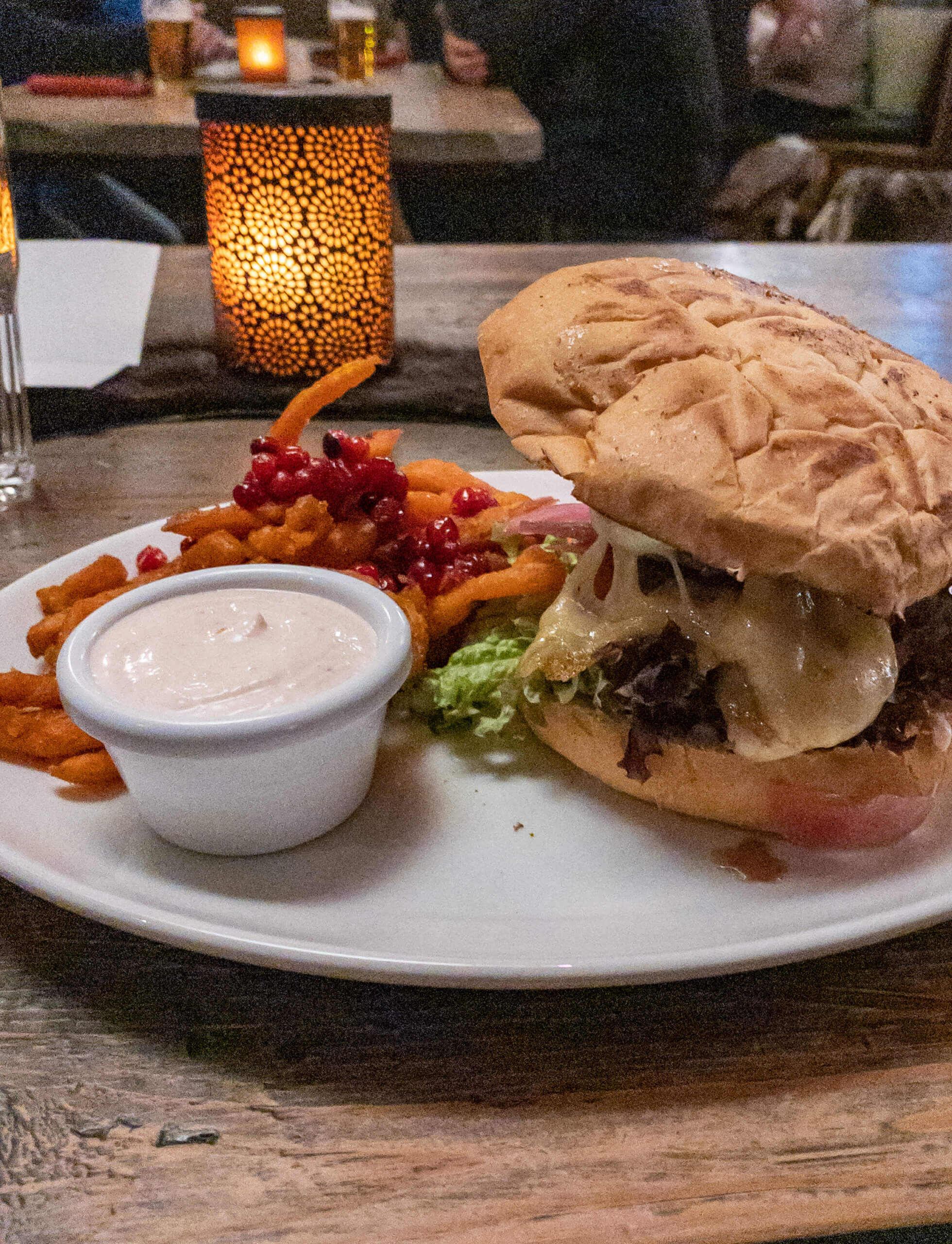
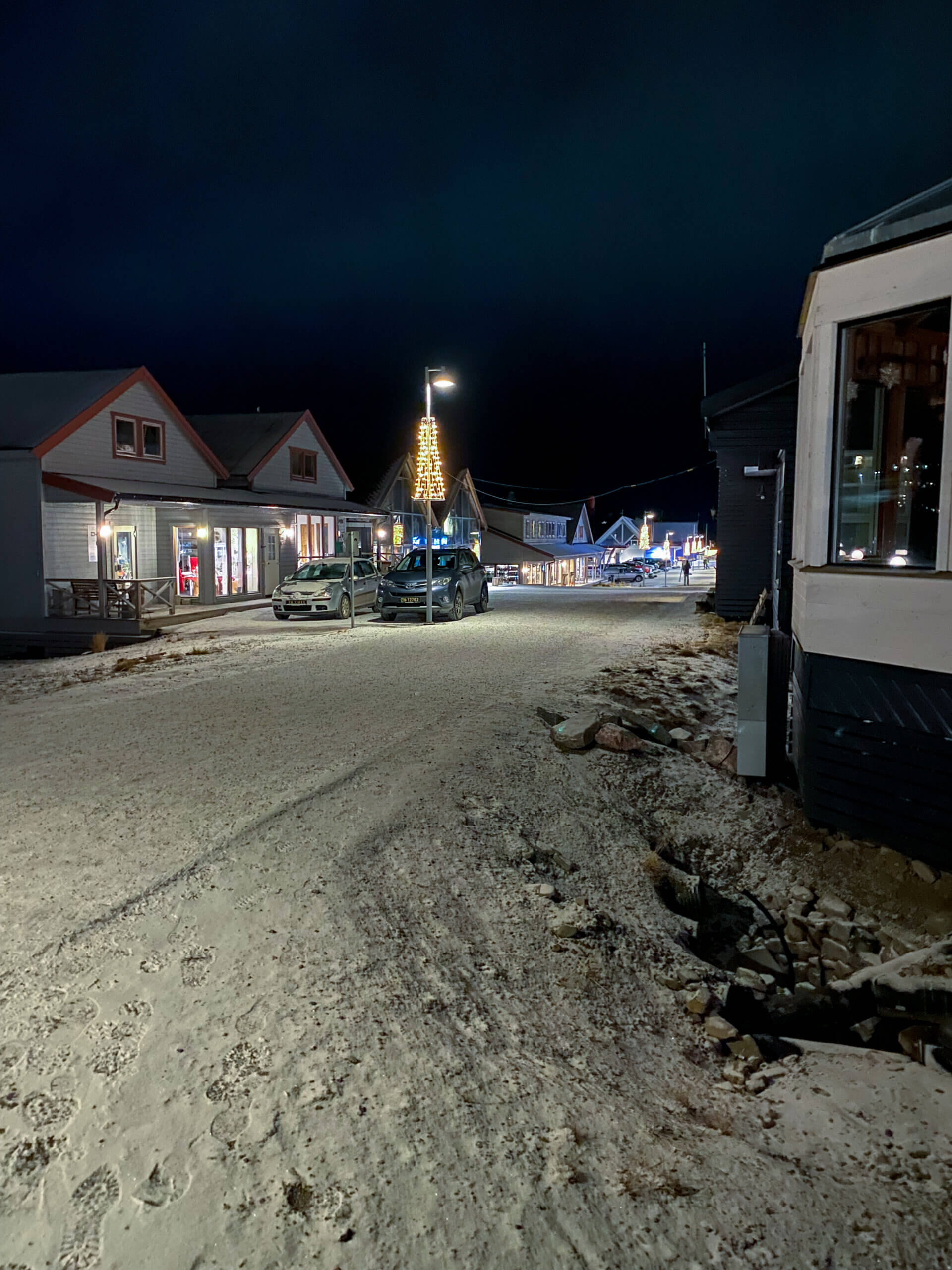
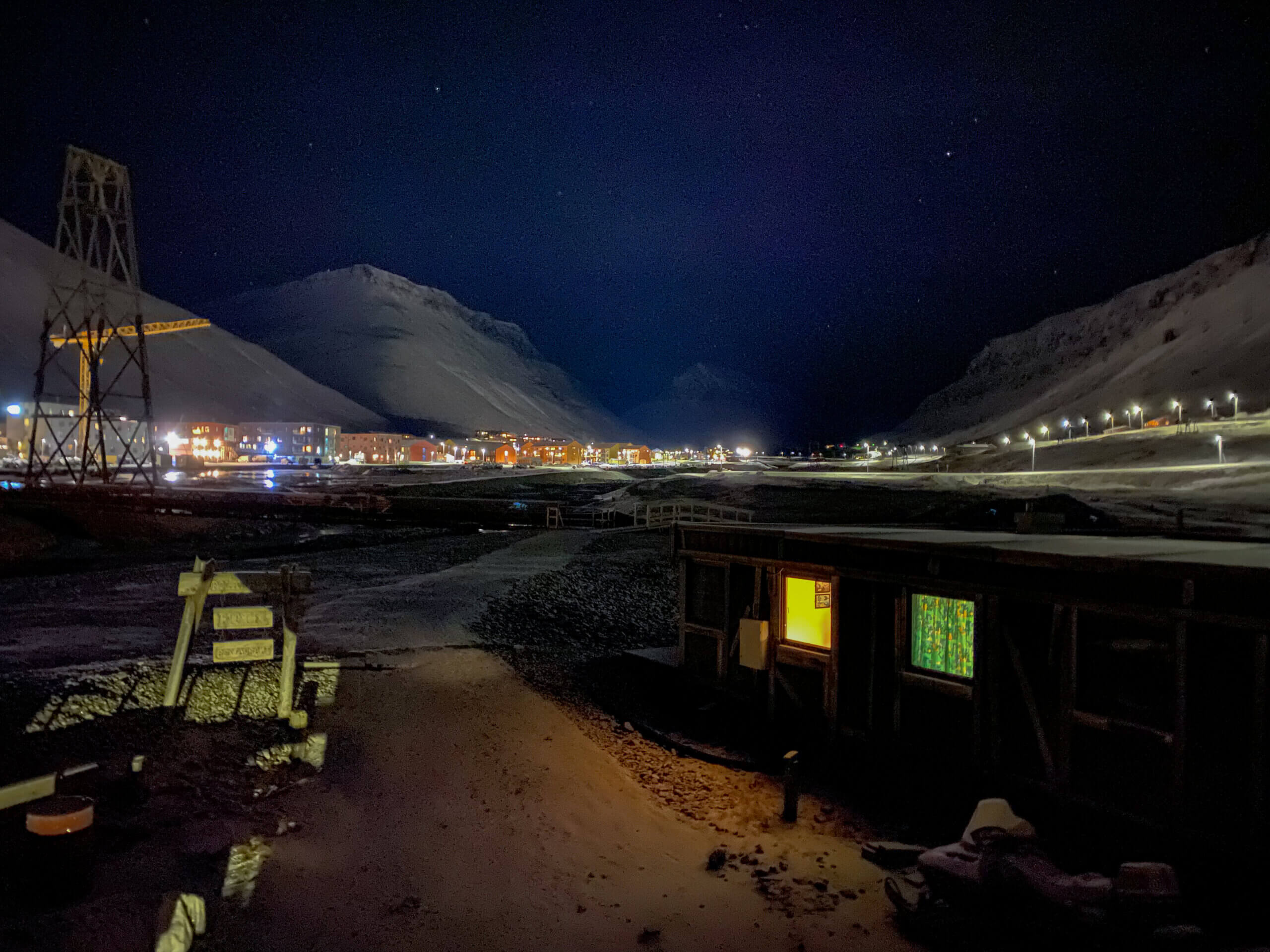
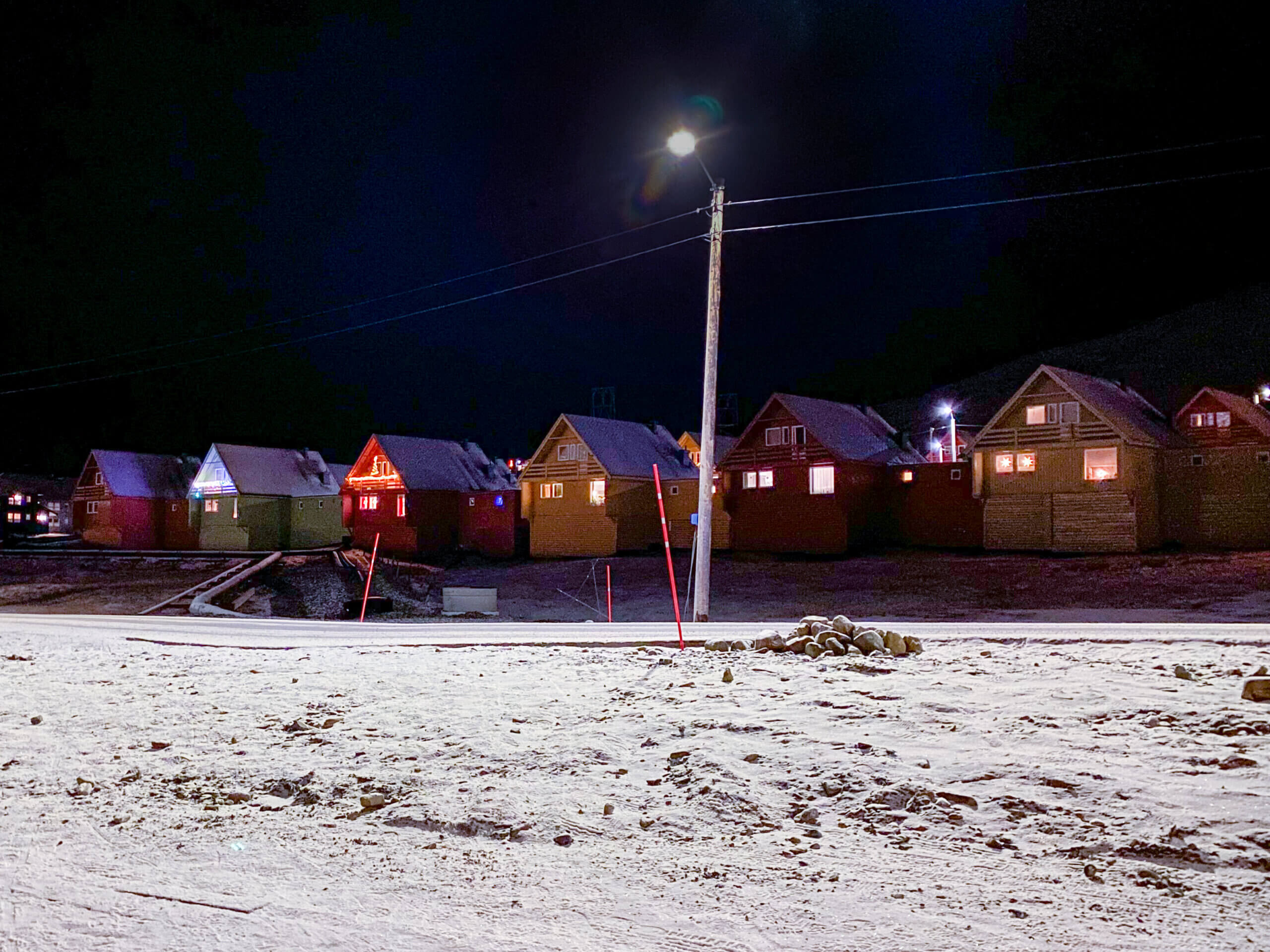
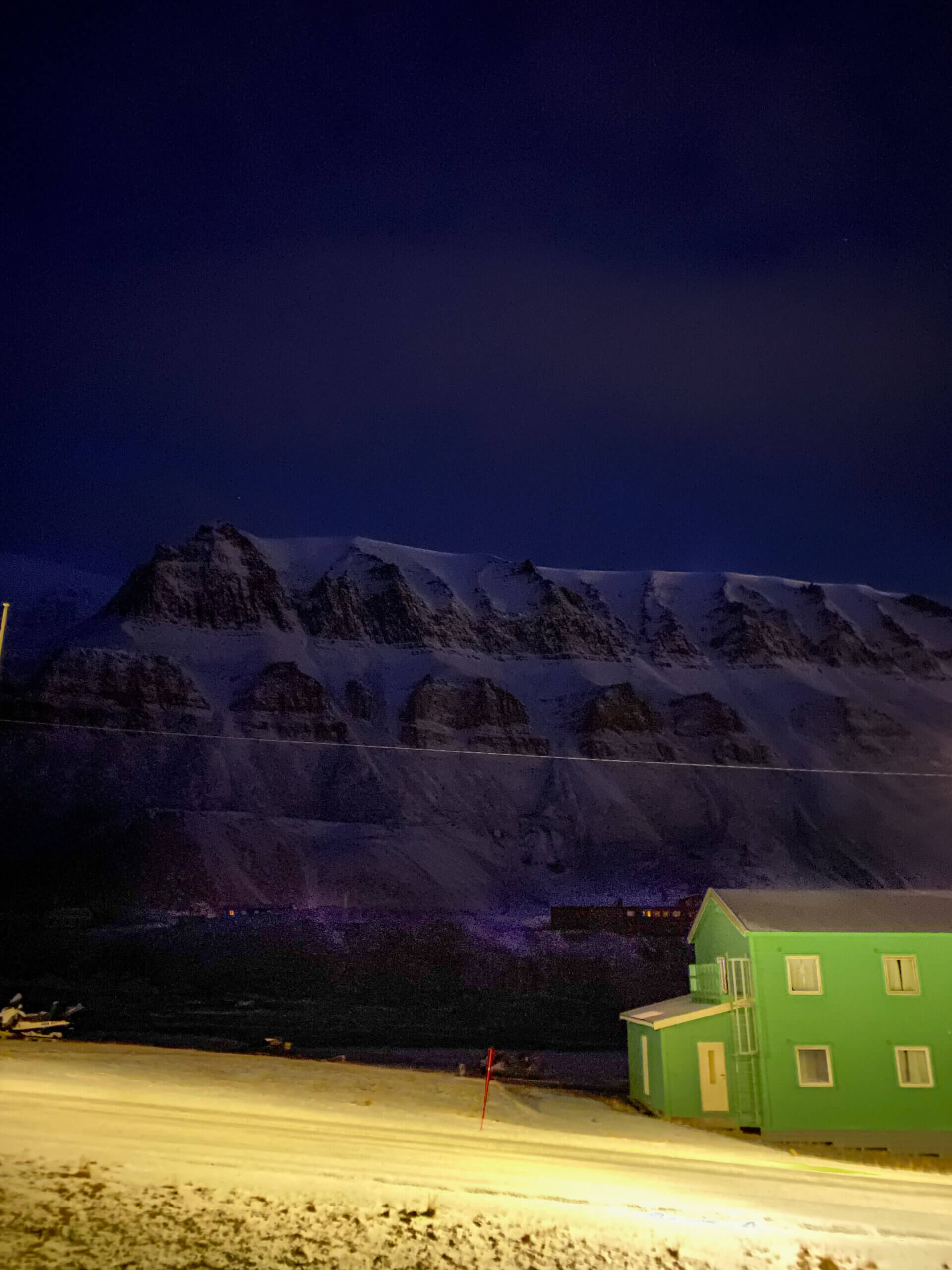
Day 2
I wake up early and rested and enjoy a nice breakfast of waffles, bread, "brown cheese" (whey cheese), orange juice, etc. before layering up to head outside. Getting ready to go outside takes much longer when it involes several layers. Today, I am going on an ice cave tour with Svalbard Wildlife Expeditions.
Ice Cave Tour
The van arrives promptly at 9:30 AM, we pick up a few more people, and drive to the warehouse in town. At the warehouse, we have a short briefing and gather our crampons and trekking poles before driving up to the top of Longyearbyen where we set off for the ice caves. As we begin to walk into the darkness, and away from the lights of the town, we are greeted by the northern lights. We take in their beauty for a few moments and then turn on our headlamps and continue on. We pass by an abandoned Husky kennel on our right which we are told is where the governor's dogs were kept back in the day when dog sleds were the only way of transportation — before snowmobiles became popular. Due to the recent warmer temperatures and rain, it is quite icy which makes the hike challenging but fun. At times, one wrong step would send you sliding down the side. I think we all fall at least once, but luckily we don’t slide down. We dig our crampons into the snow and ice as we head for the glacier. Eventually, we reach the bottom of the glacier (Larsbreen) and continue our slippery trek up toward the ice caves.
Some of the ice caves have water inside due to the recent temperatures so our guide does a quick check before we enter. We head down into the first cave to find walls of ice spotted with the occasional piece of coal. It feels much warmer inside the cave as we get a break from the wind. We make our way as deep as possible until we encounter unfrozen water which prevents us from going further. Inside the second cave, we enjoy some cookies and warm drinks. I opt for Solbærsirup (blackcurant syrup) and hot water. I typically don't like hot drinks but this was quite delicious (I even bought a bottle to take back to Germany).
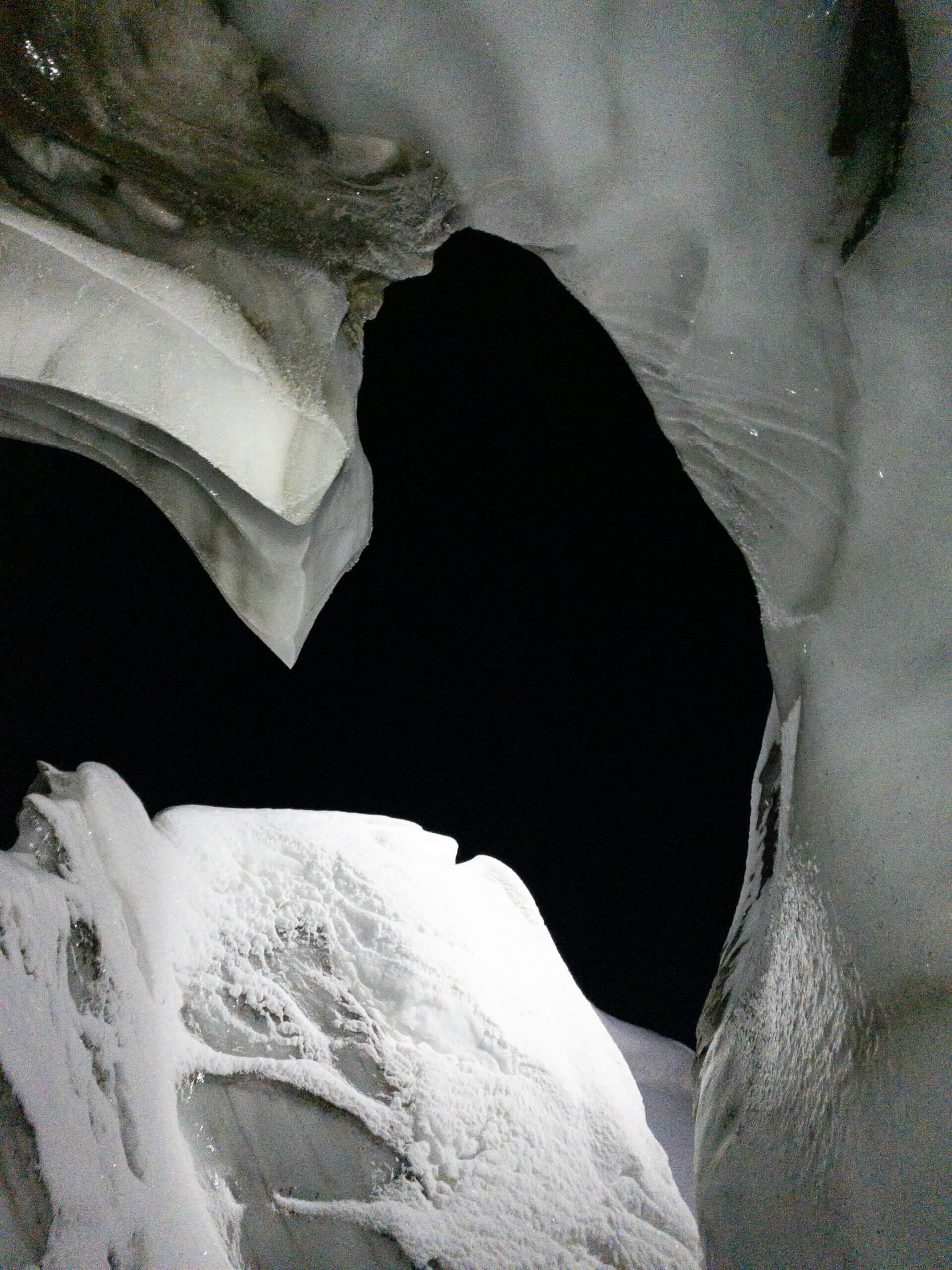

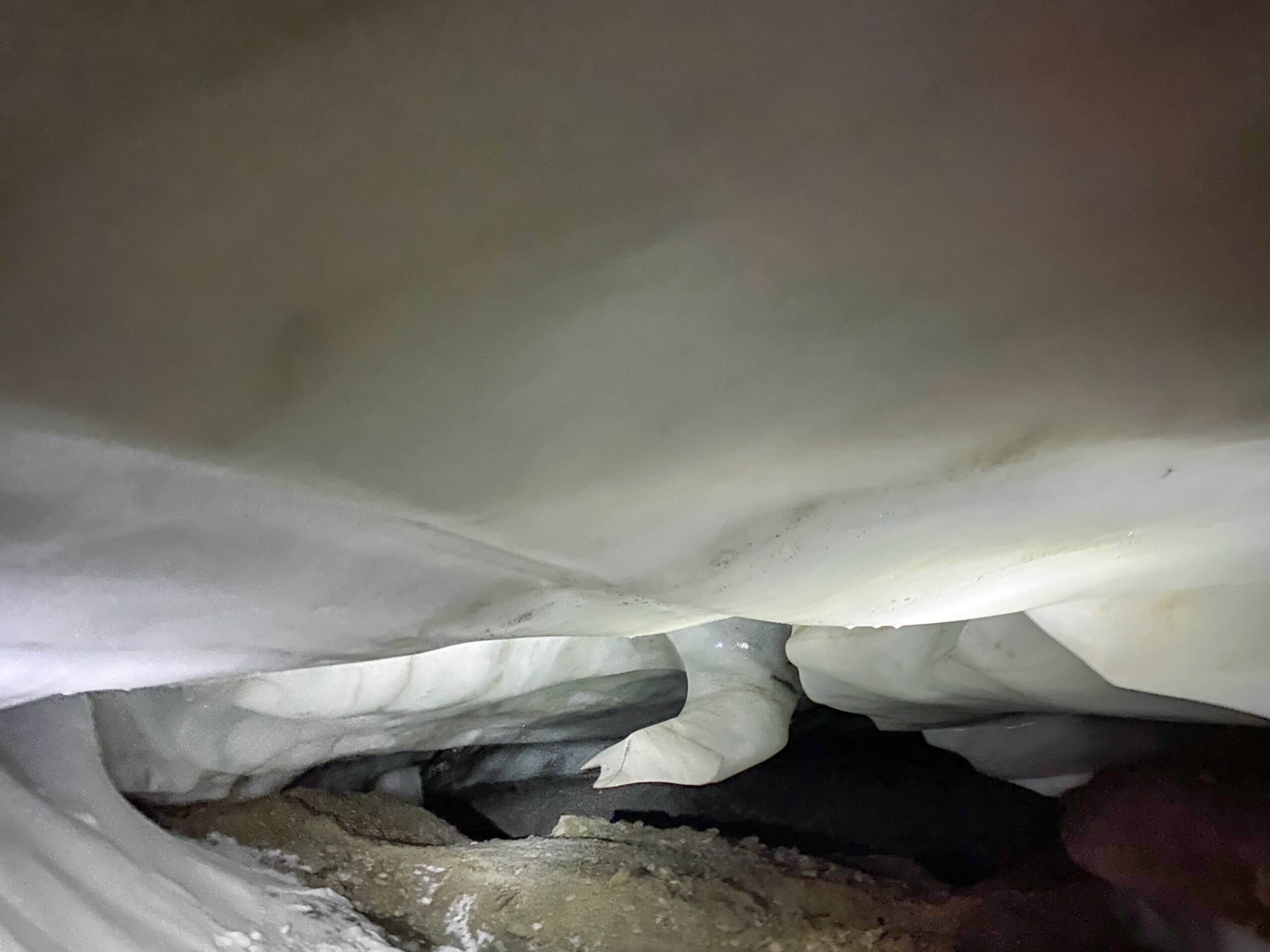
We near the top of the glacier and another ice cave. I feel like I am entering another world as I climb down into the cave, leaving the dark sky behind, to eventually be surrouned by ice. We emerge from the cave and hike up a little more before we head back down the other side. As we descend, our guide points out the ocassional fossil of plants, a small crevasse that recently formed, and several snowmobiles that were left in the summer and are now frozen in place. The lights of town slowly become visible as we near the bottom, end our trek, and head back into town.
Time to Eat
After the 6 miles (9 km) hike, I have worked up an appetite. Myself and a German I met on the tour decide to go to a cafe for a snack and to relax. There are so many options, but I choose the Oreo cake and an ice tea. We talk for a few hours until the cafe closes and then walk across town to Vinterhagen (winter garden) for dinner. We enter the restaurant, take off our boots (this is quite common in Longyearbyen and dates back to when coal mines were in town), and walk into the warm, floor-heated, plant-filled conservatory restaurant. The atmosphere is truly unique as it is warm and green inside, but outside is dark, cold, and white. I order the seafood chowder as an appetizer and the arctic salmon with confit tomatoes, asparagus, roasted potatoes, and shaved fennel. As we are putting our boots on to leave, a man walks in from outside and lets us know that the northern lights are out and very strong. We quickly finish lacing up our boots and hurry outside — you never know when the northern lights will stop.
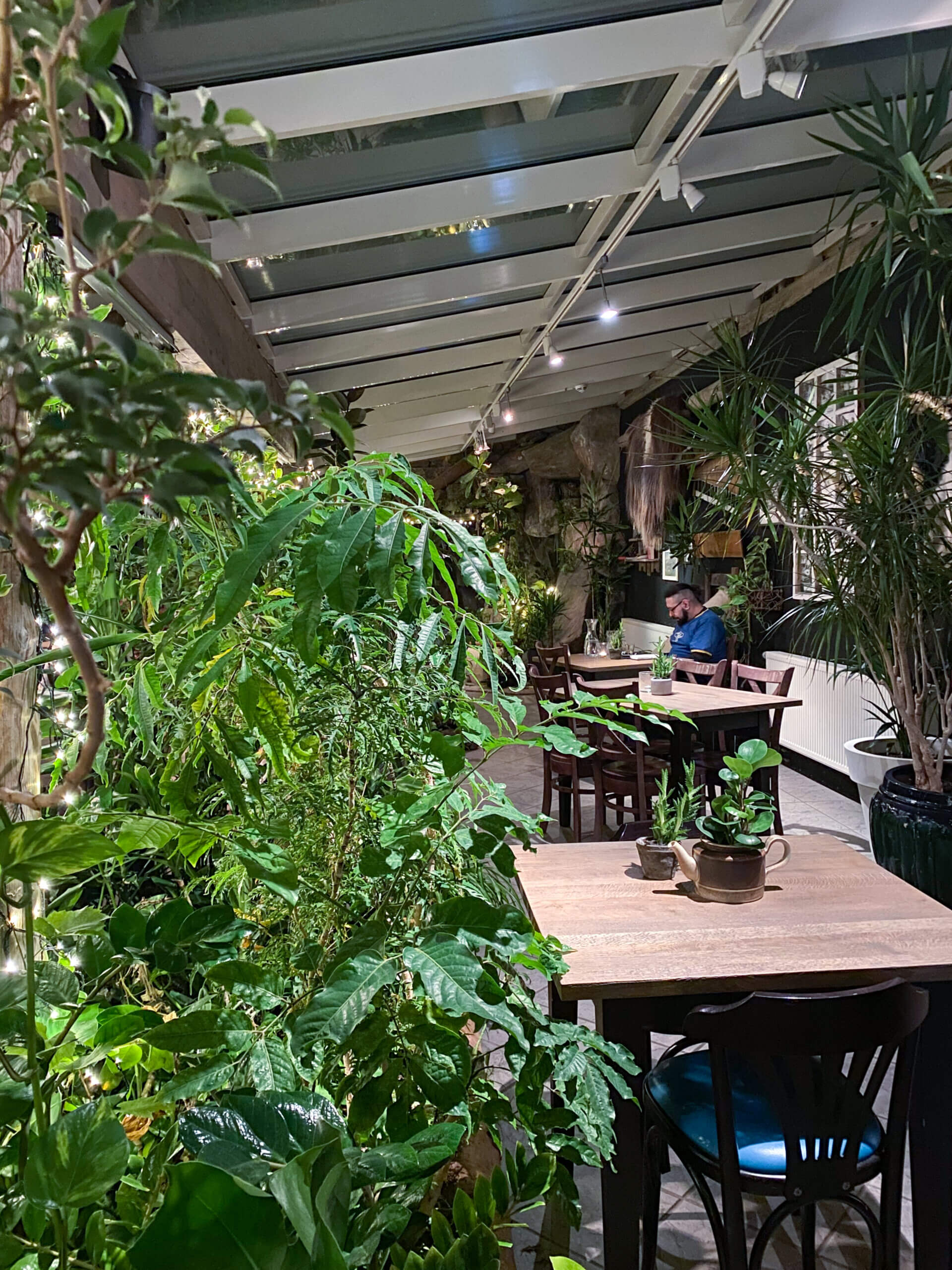
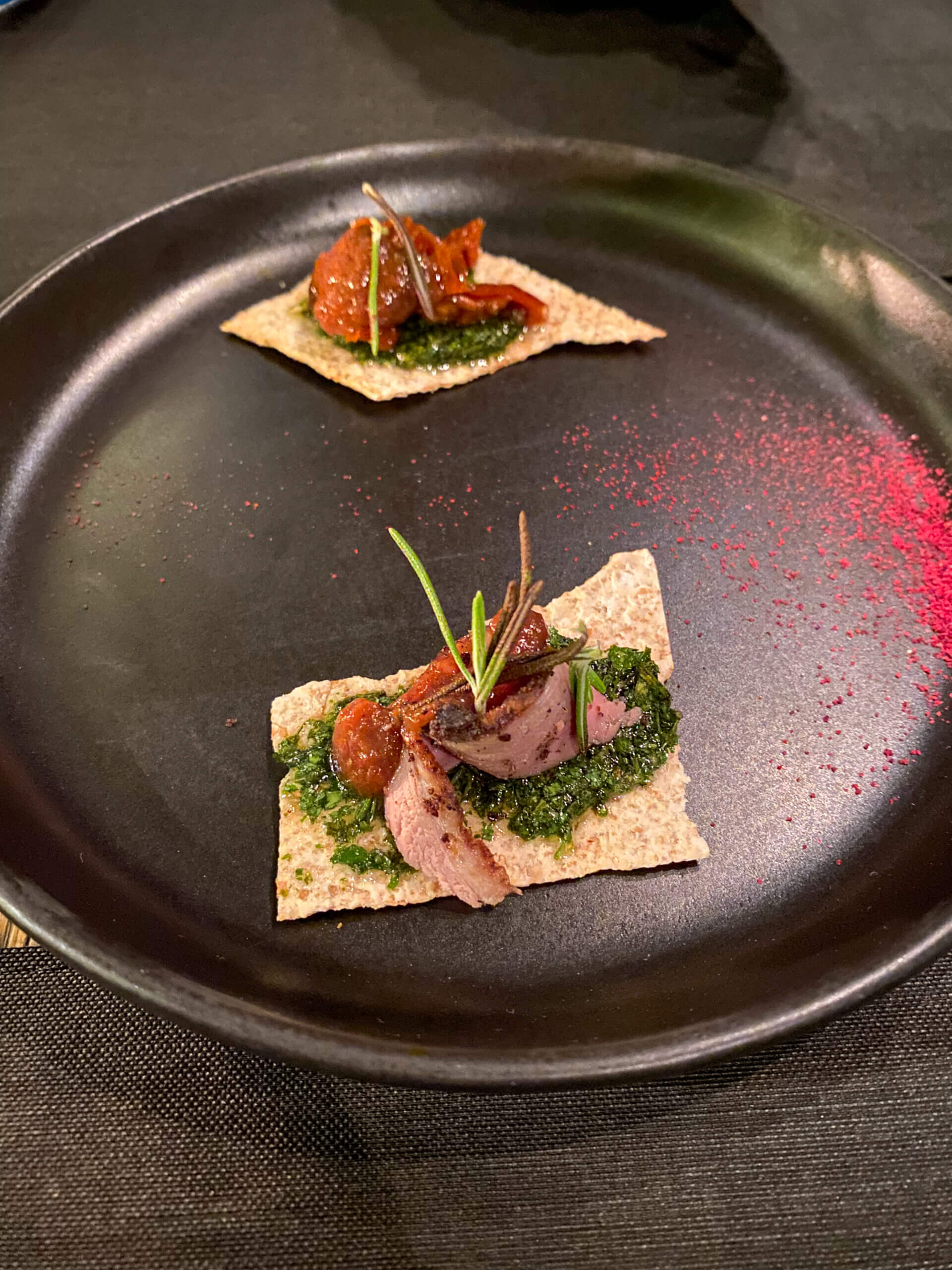

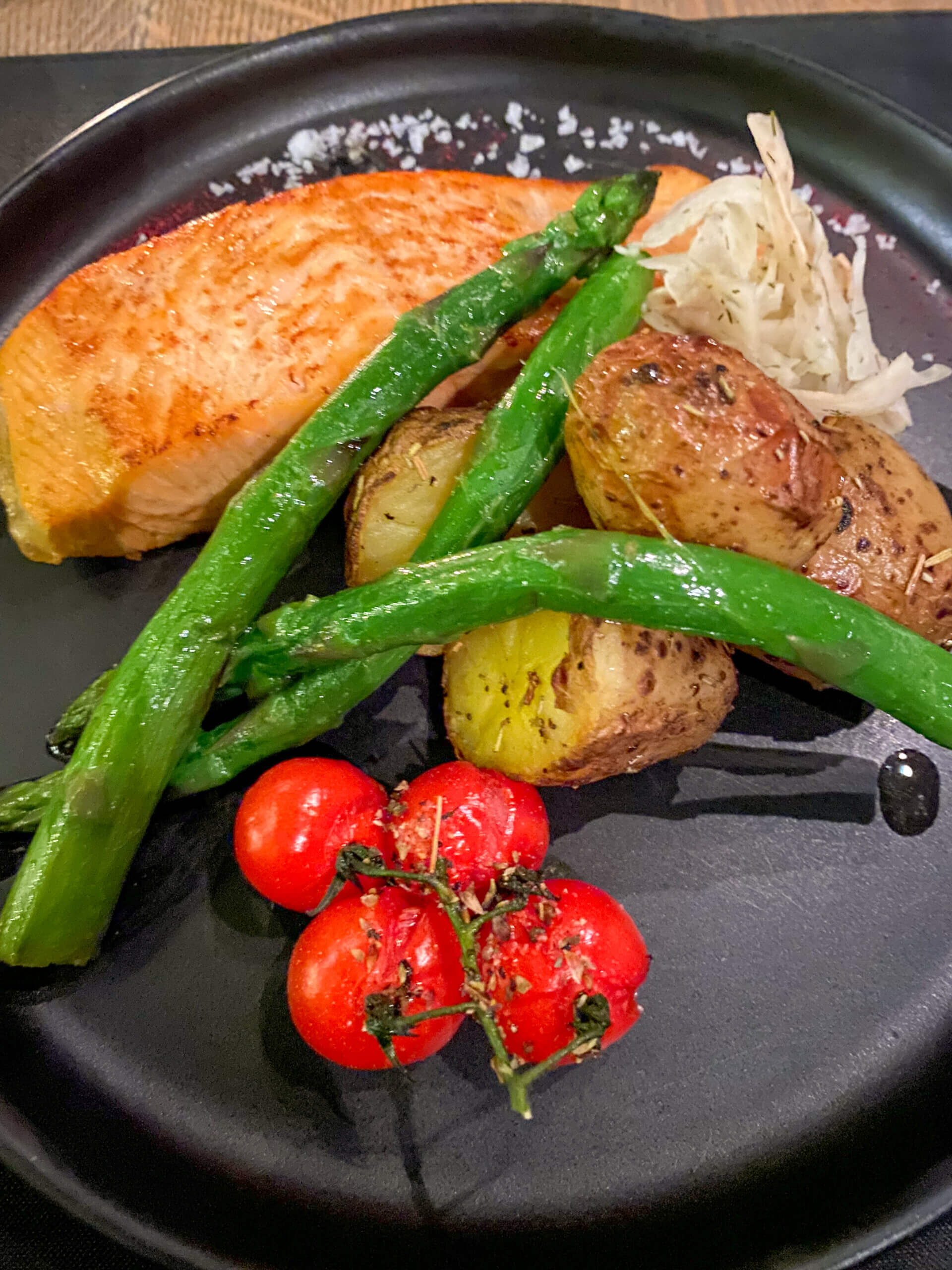
Northern Lights
Even with the illumination from the lights in town, we begin to see the lights dancing away in the dark sky. We decide it's best to head toward the outskirts of town where it's even darker. As we are walking along the fjord, the northern lights intensify even more and are filling the sky. No matter the direction we look in the sky, lady aurora is dancing away. It feels like only moments, but before we know it, we have been outside for three hours in the cold, crisp air enjoying the natural beauty of the lights. Luck was on my side this time...this is the second night in a row she has made her appearance (we later find out these two nights have been some of the best northern lights the locals have seen).
Despite how far north it is, Svalbard actually isn't the best place to see the northern lights. The auroral oval, where the lights typically appear in the north, is actually south of Svalbard. Because of this, in Svalbard, depending on the strength, you often have to look south to see the lights. You have a much better chance of seeing the northern lights in Tromsø, in northern mainland Norway. However, Svalbard is better for seeing the northern lights during the day.
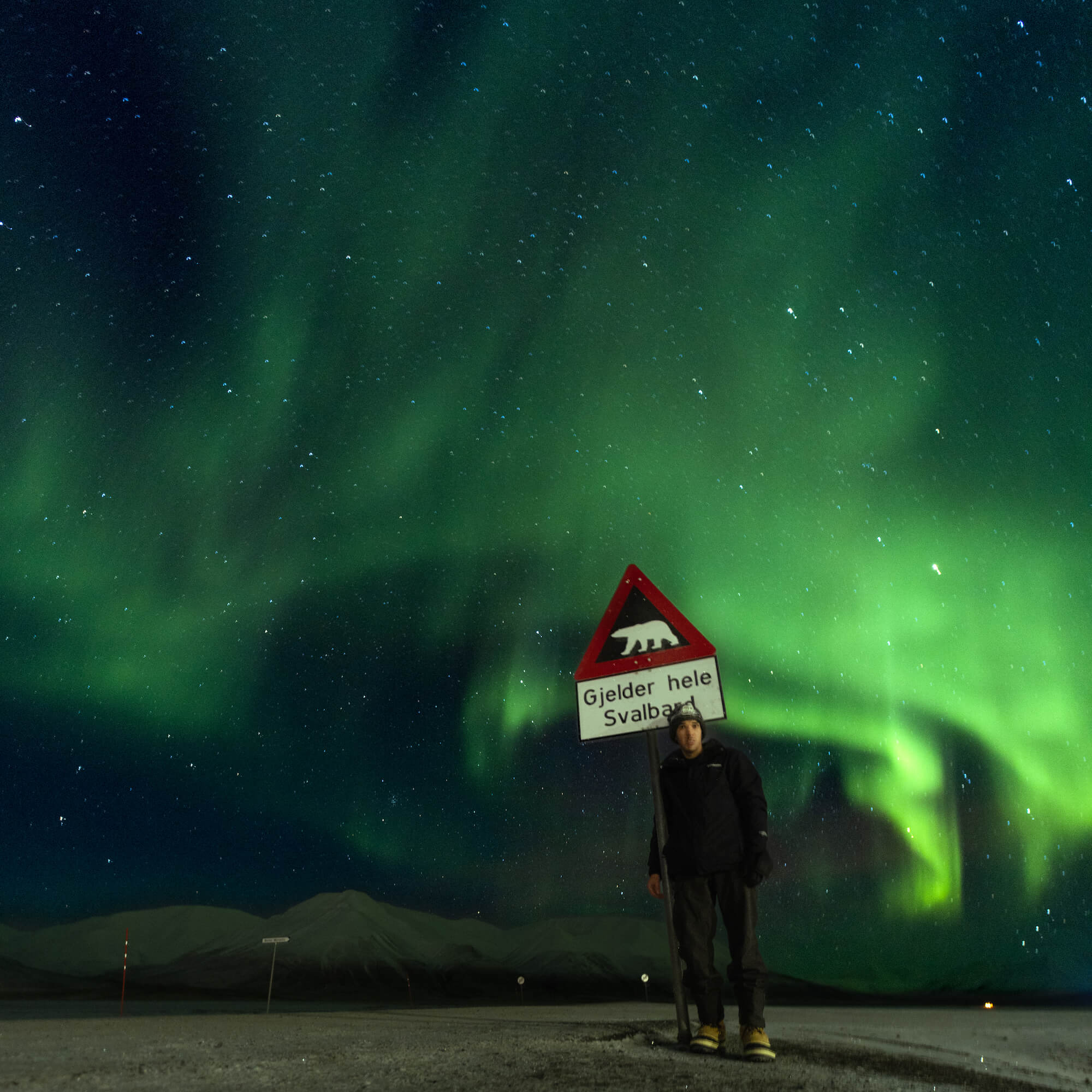
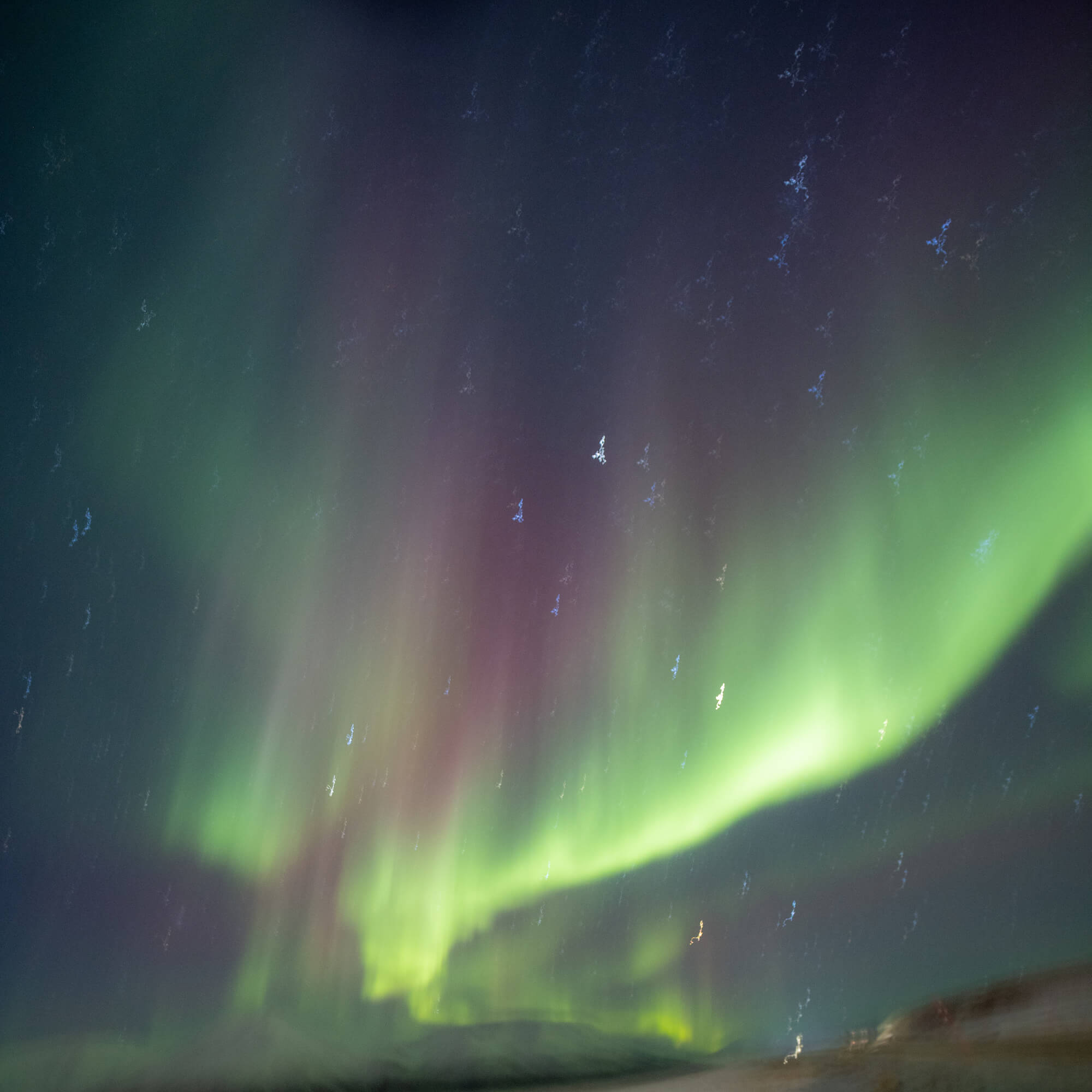

Day 3
Today is the first day of Advent which comes along with various activities in town. Many of the streetlights are turned off and the town gathers together with flaming torches and walks around the town. The first stop is Mine 2 where there is a mailbox to Nisse (Norwegian version of Santa Claus) who is said to reside in the abandoned mine. Later, in the center of town, songs are sang, mulled wine and gingerbread are served, and the Christmas tree is lit. Because Svalbard is in the arctic, no trees grow here so the Christmas tree has to be shipped in each year.
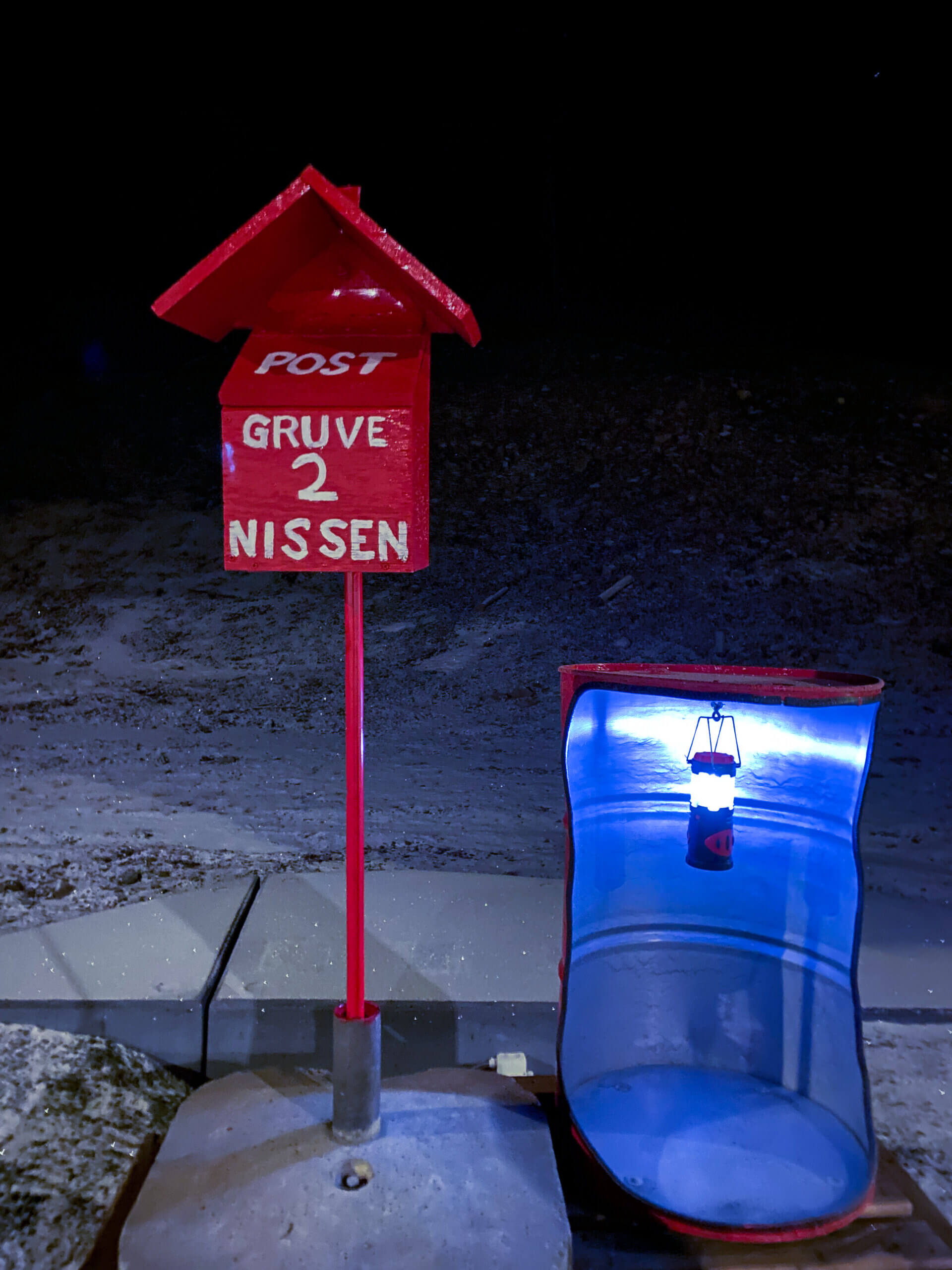
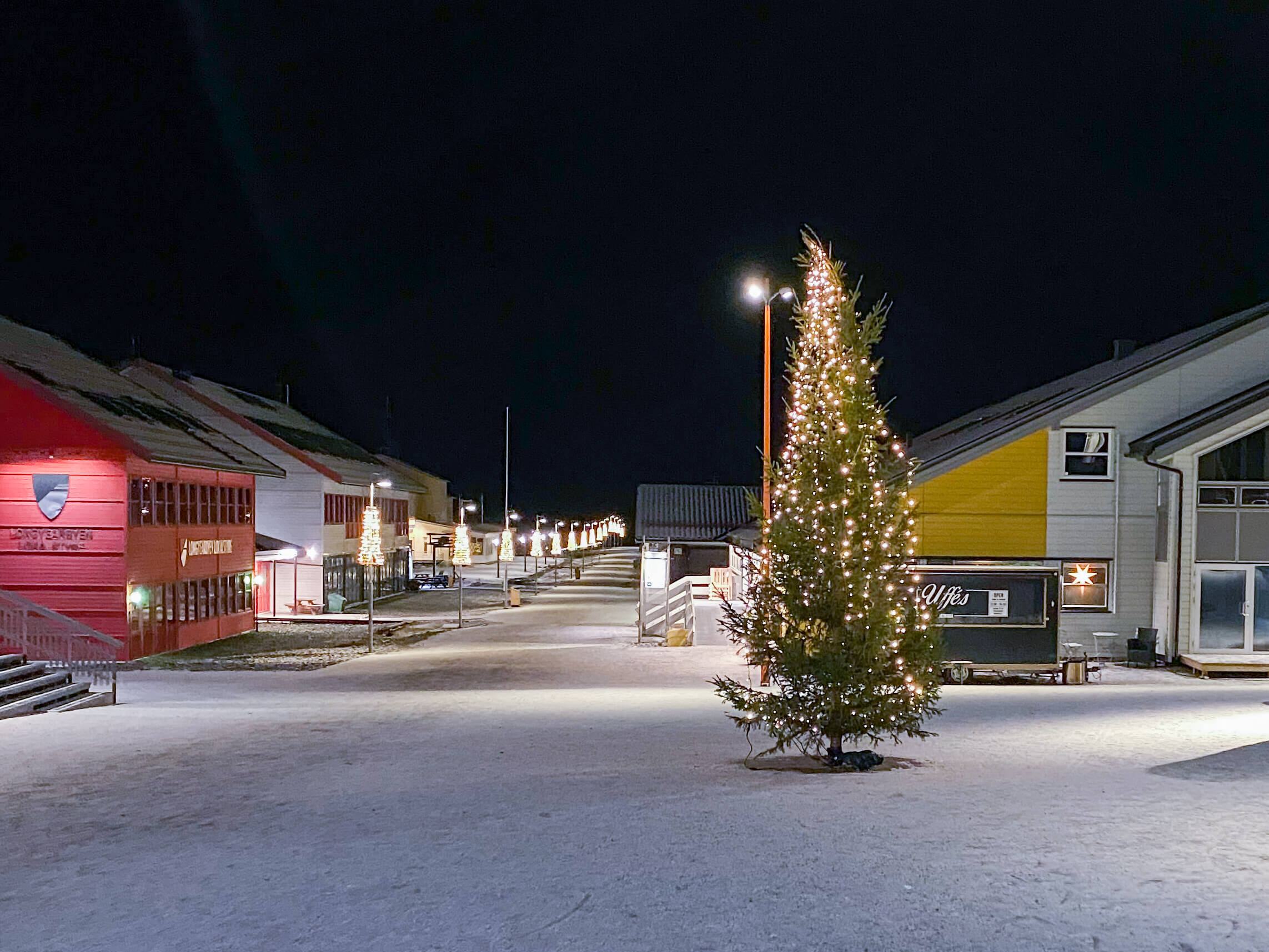
Dog Sled Tour
It's now time to go on a dog sled tour with Green Dog Svalbard and visit with all of the dogs. We drive 15 minutes east of town to the kennel. As we drive up the driveway, we pass the lower kennel before arriving at the middle kennel which houses our guide's dogs. The dogs at Green Dog are a mix between Greenland Dog and Husky because the owners moved to Svalbard from Greenland.
I exit the van and am instantly greeted by the barks and howls of the dogs. Before we go into the kennel we put on our snowmobile suit (the dogs love to jump and cuddle so we need to protect our clothes), mittens, reflective vests, boots, and headlamps. Now it's time for dog cuddles! As soon as I step foot inside, all of the dogs are begging for my attention. I make my way around making sure to give them all some love. I could stay here all day with the dogs.
Now it's time to get the dogs hooked up to the sleds. The dogs begin to go crazy as they are all hoping it's their chance to go on a run. Eight dogs are hooked up to each sled before we begin down the driveway and begin our 10 km journey. We take a few short breaks along the way to let the dogs rest and make some changes to the dogs' positions.
We arrive back at the kennel and give the dogs some final cuddles before we head farther up the driveway to where the puppies, retired dogs, and staff housing are. We enter a quaint, cozy cabin where we enjoy some cookies, warm drinks and socializing. We are now warm and ready to head back outside to see the puppies! There are currently 7-week old and 2-week old puppies. My guide hands me one of the 2-week old puppies and my heart melts — I think about taking him home with me in my backpack. Thirty minutes later and it is time to head back into town. If you ever visit Svalbard, I highly recommend any of the tours that involve the dogs.
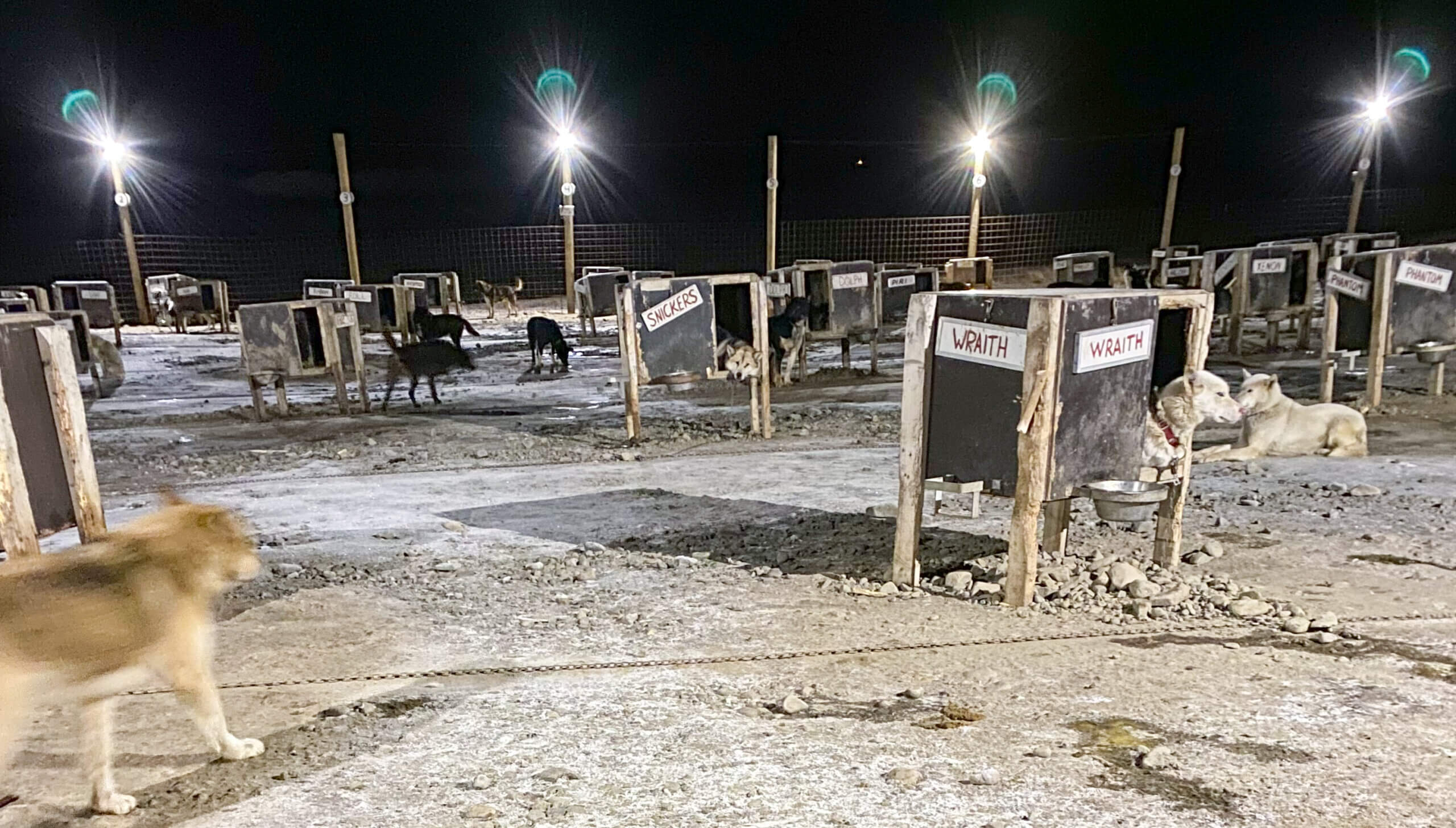

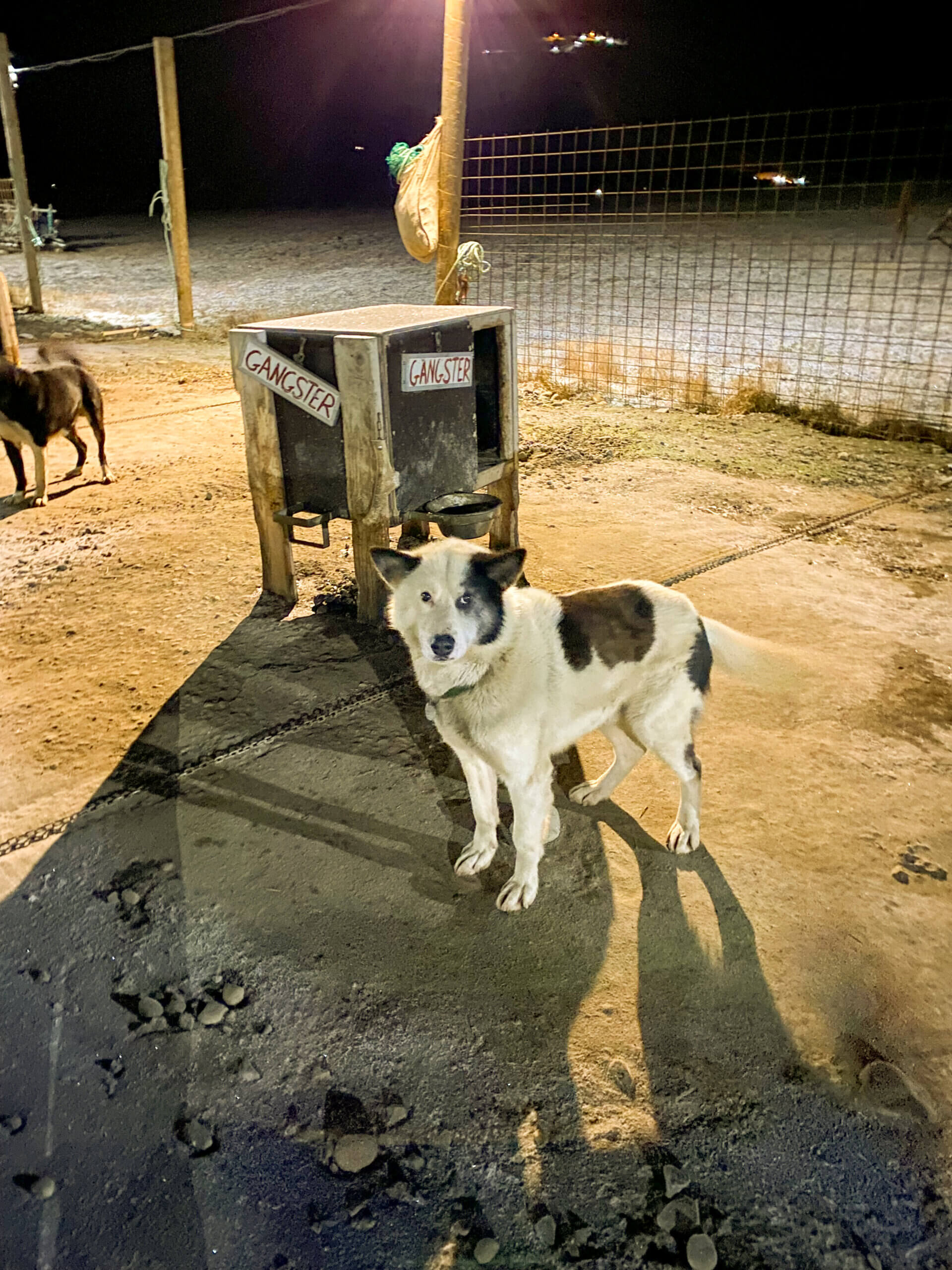
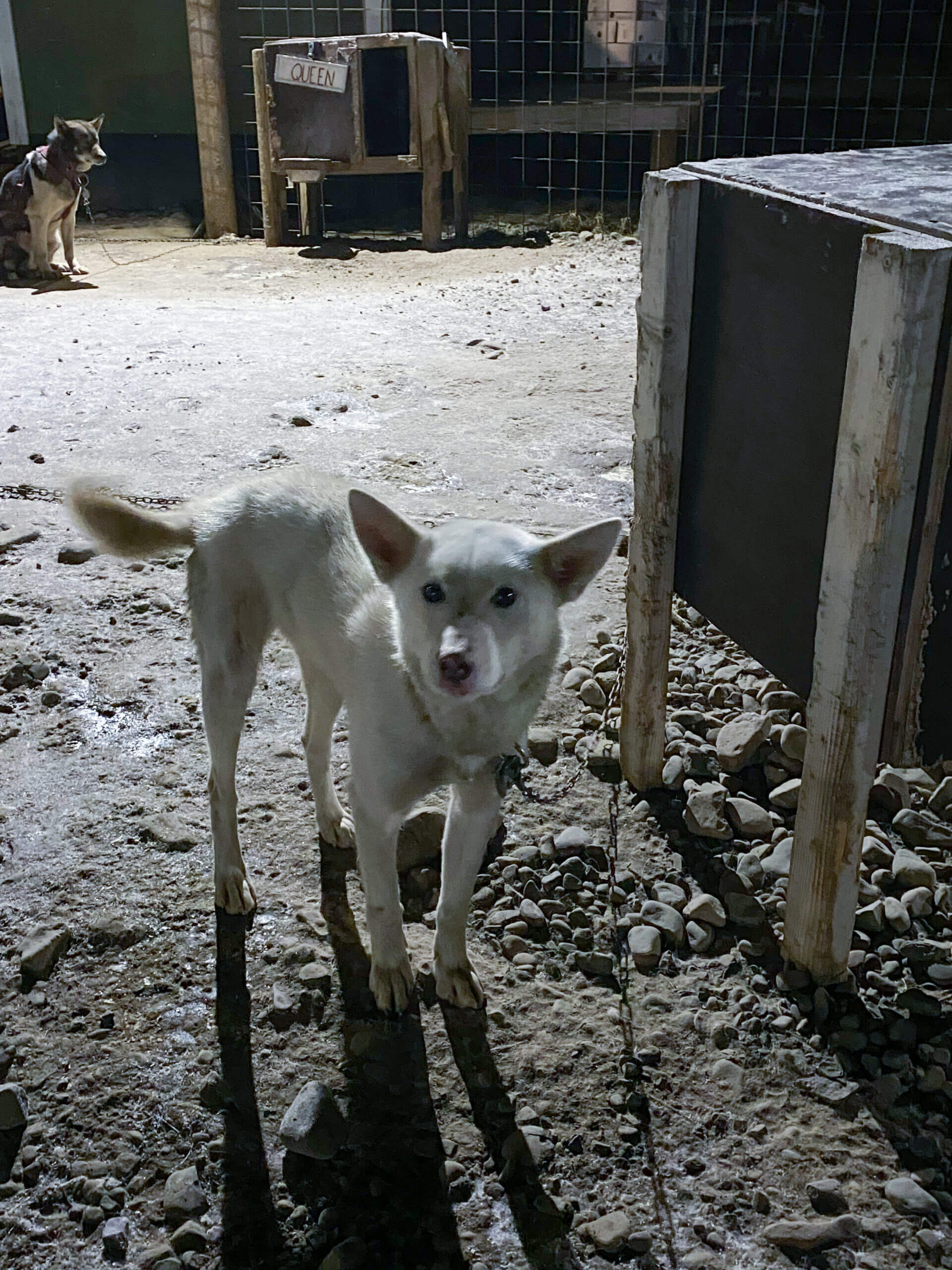
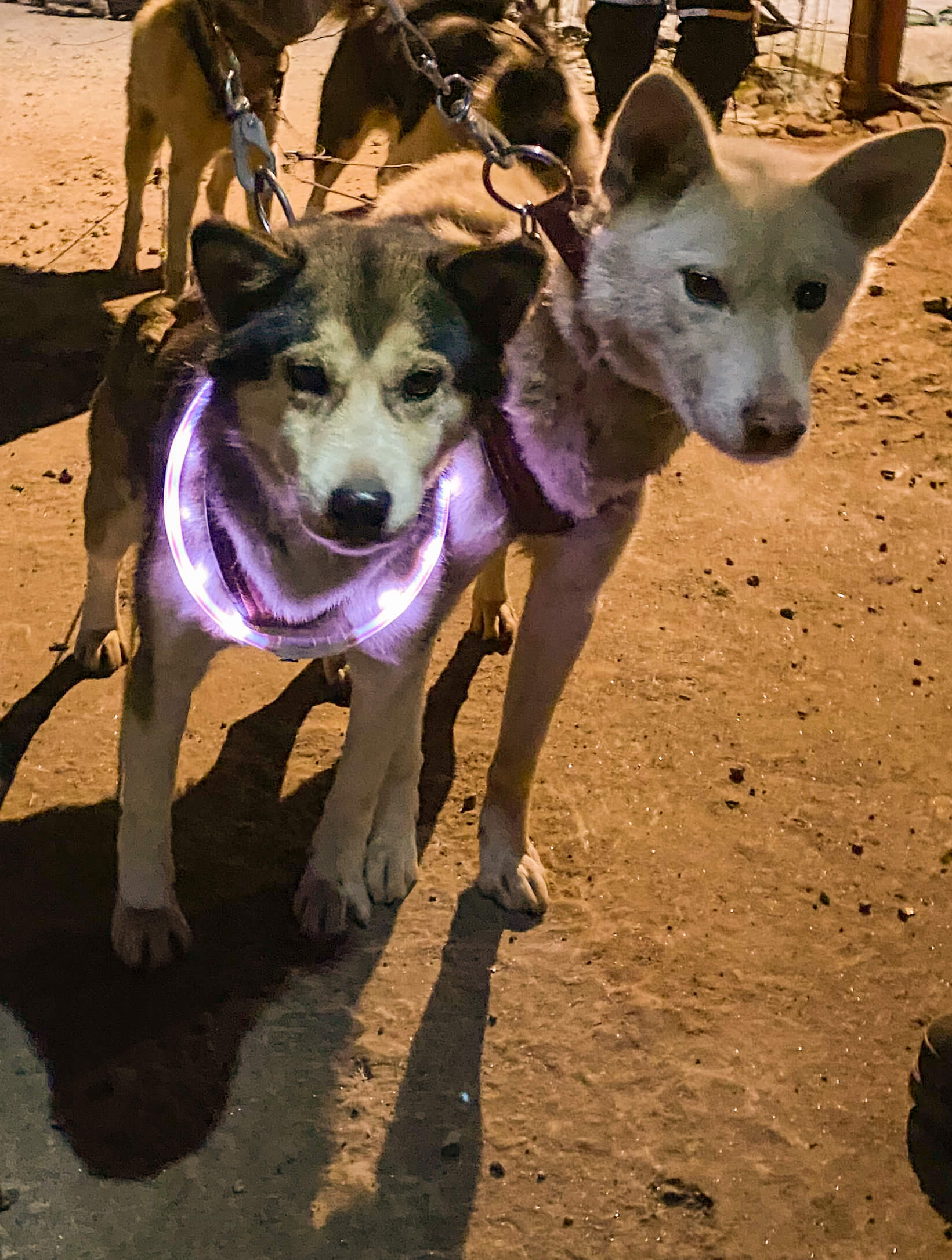
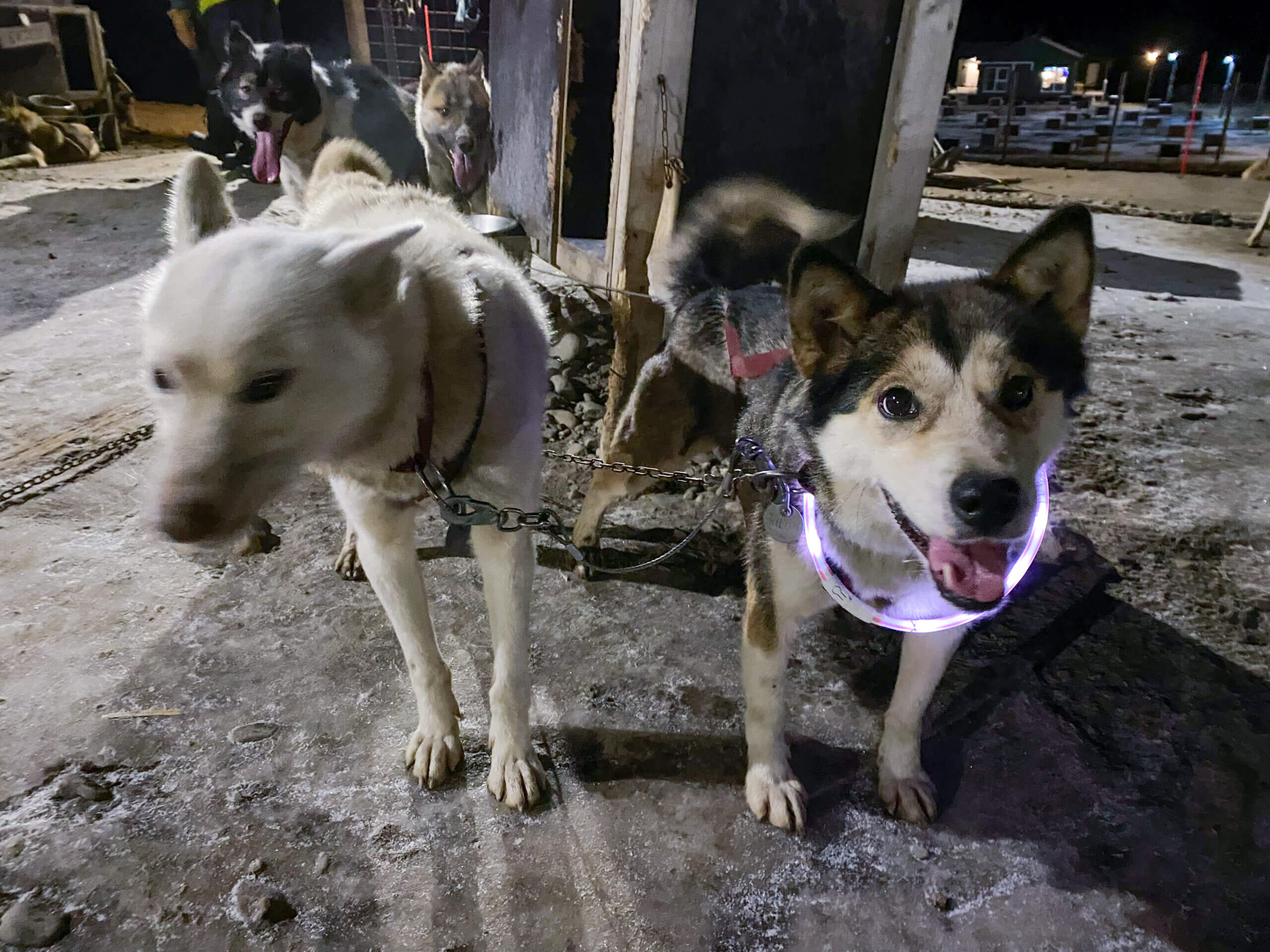
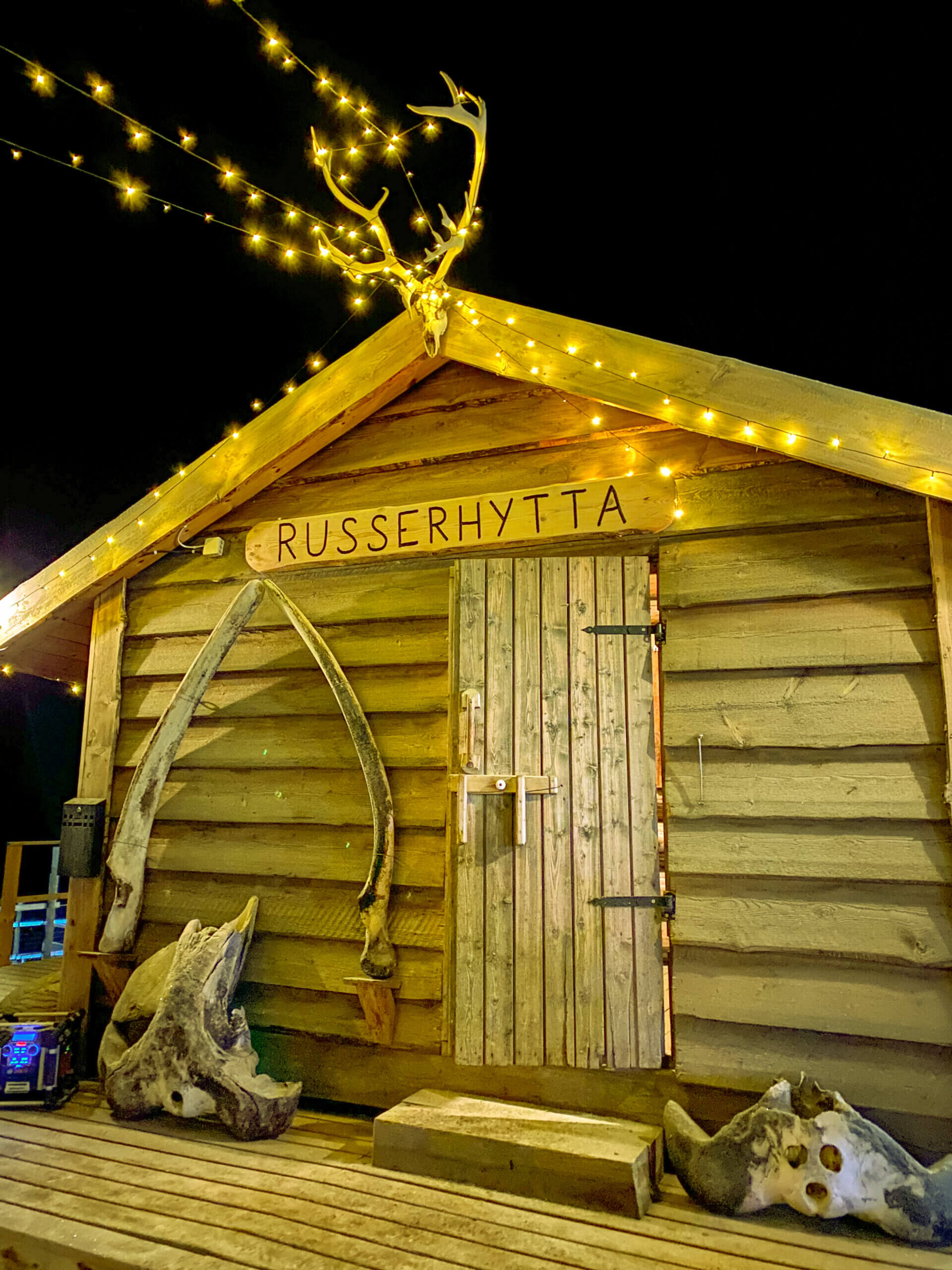
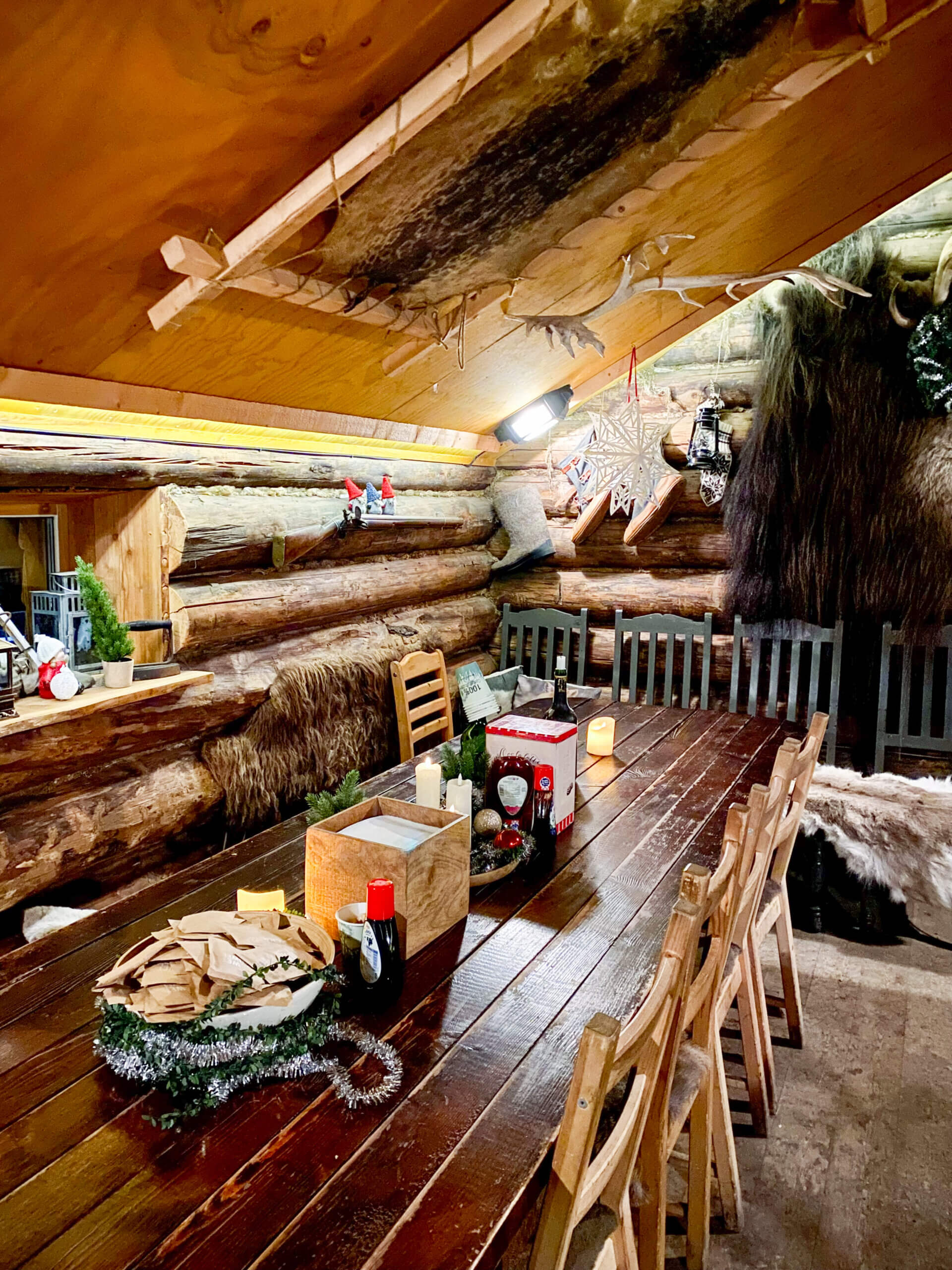

Day 4
Sadly, today is my last full day here. I eat breakfast and relax in the TV room before my final tour begins at 10 AM. My final tour is a hike to Platåfjellet. Platåfjellet is a mountain with provides a panorama view of Longyearbyen.
Hike to Platåfjellet
Felix, our guide for today, arrives promptly at 10 AM and we then drive to Funken Lodge where we pick up the others — three of which are also from the US and two from Canada. We drive to the other side of town to Svalbard Church which is where we will begin our hike. As usual, before beginning the hike we put on our crampons, headlamps, and grab our trekking poles.
As we begin our hike, Felix points out some remnants of the old church as well as some old cables laying in the snow from the old aerial transport system that would bring coal from the mines in the valley to the loading areas. In 2003, protected status was given to the remnants of the aerial ropeway which means they are not allowed to be removed. To our right we see Taubanesentralen, the aerial ropeway junction building) standing on tall steel posts.
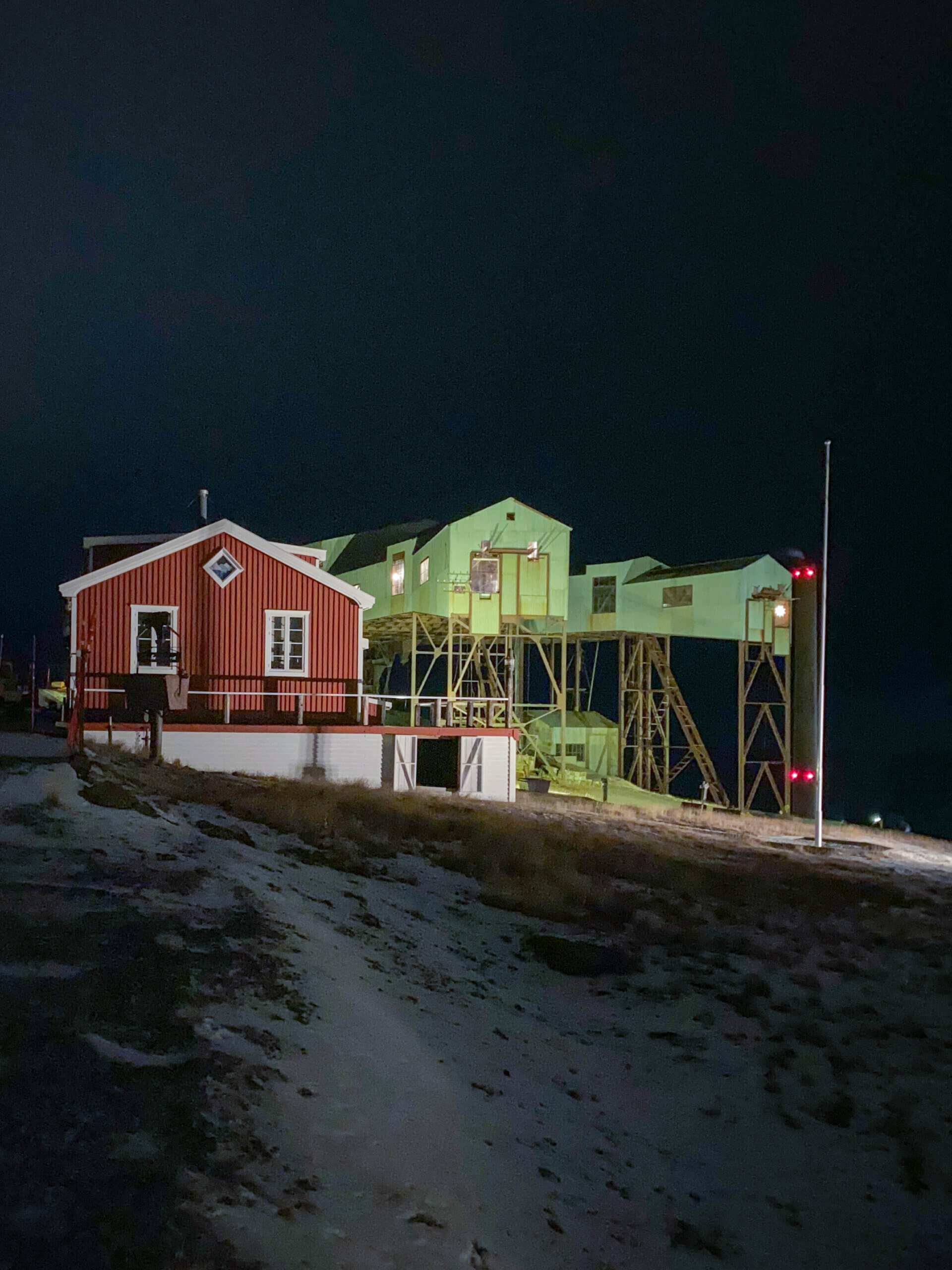
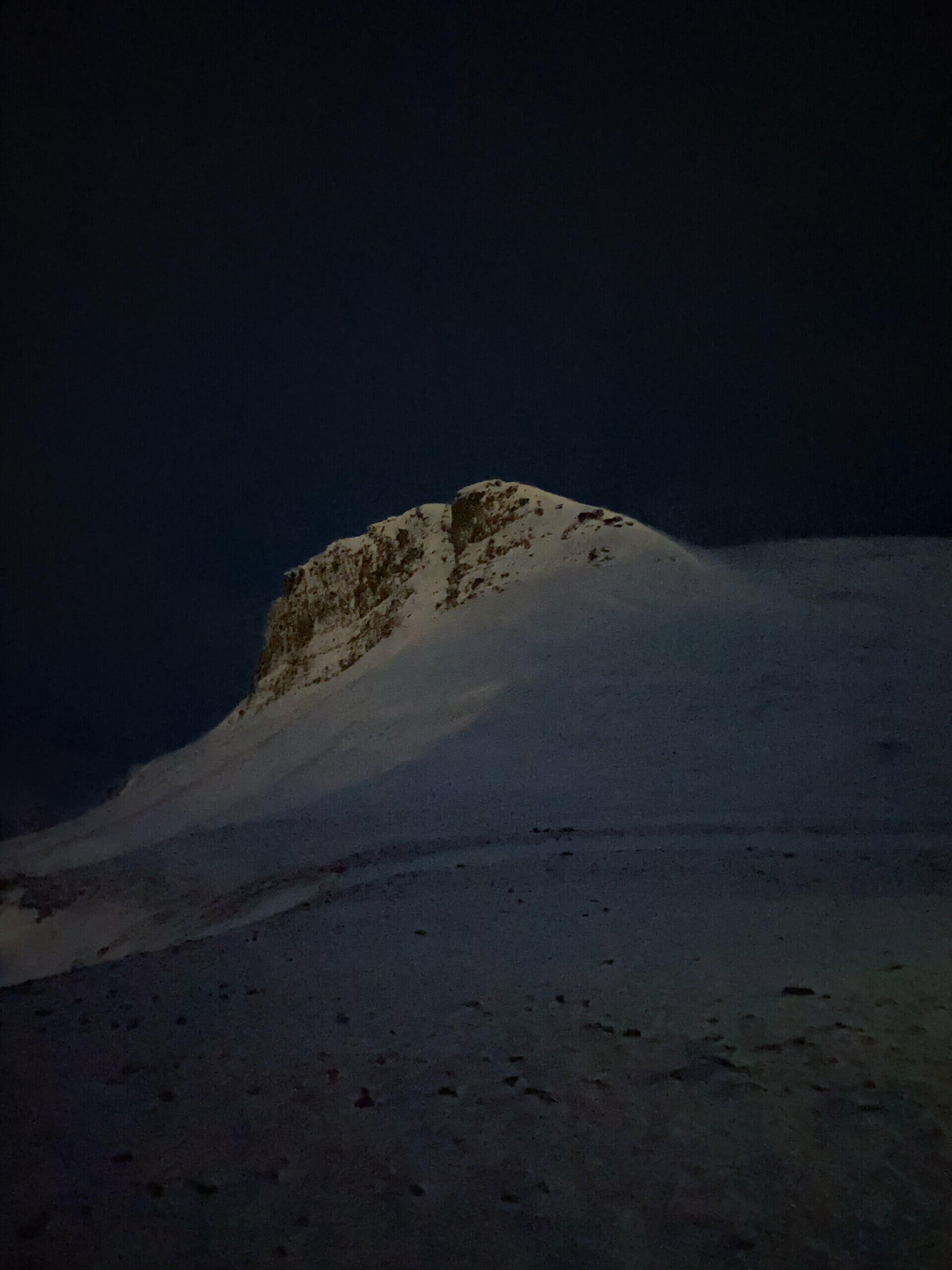
It is quite windy today and the higher we go, the more the wind blows. Just like with my ice cave tour, the ground is quite icy. However, there are more rocks here which are nice to use to get a firm footing. After around 90 minutes of hiking, we arrive to the lookout. Just as we arrive, the wind picks up even more and it begins to snow. We take in the beautiful view of Longyearbyen while being sure to not get too close to the edge — the wind and ice are a bad combination. Before the weather gets any worse, we begin our descent. Felix lets us know that it’s okay to slide down at times but to try and limit it to around 20 meters at a time. Luckily for us, we are able to stay on our feet, don’t have to resort to sliding, and make it safely back down to the church.
Last Night in Longyearbyen
After the hike, I visit Svalbard Church which was the northernmost church in the world until 2017. It is typically open 24/7 and is not only used as a church but also a cultural center. After warming up in the church, I walk over to Taubanesentralen and then head back down into town for an early dinner.
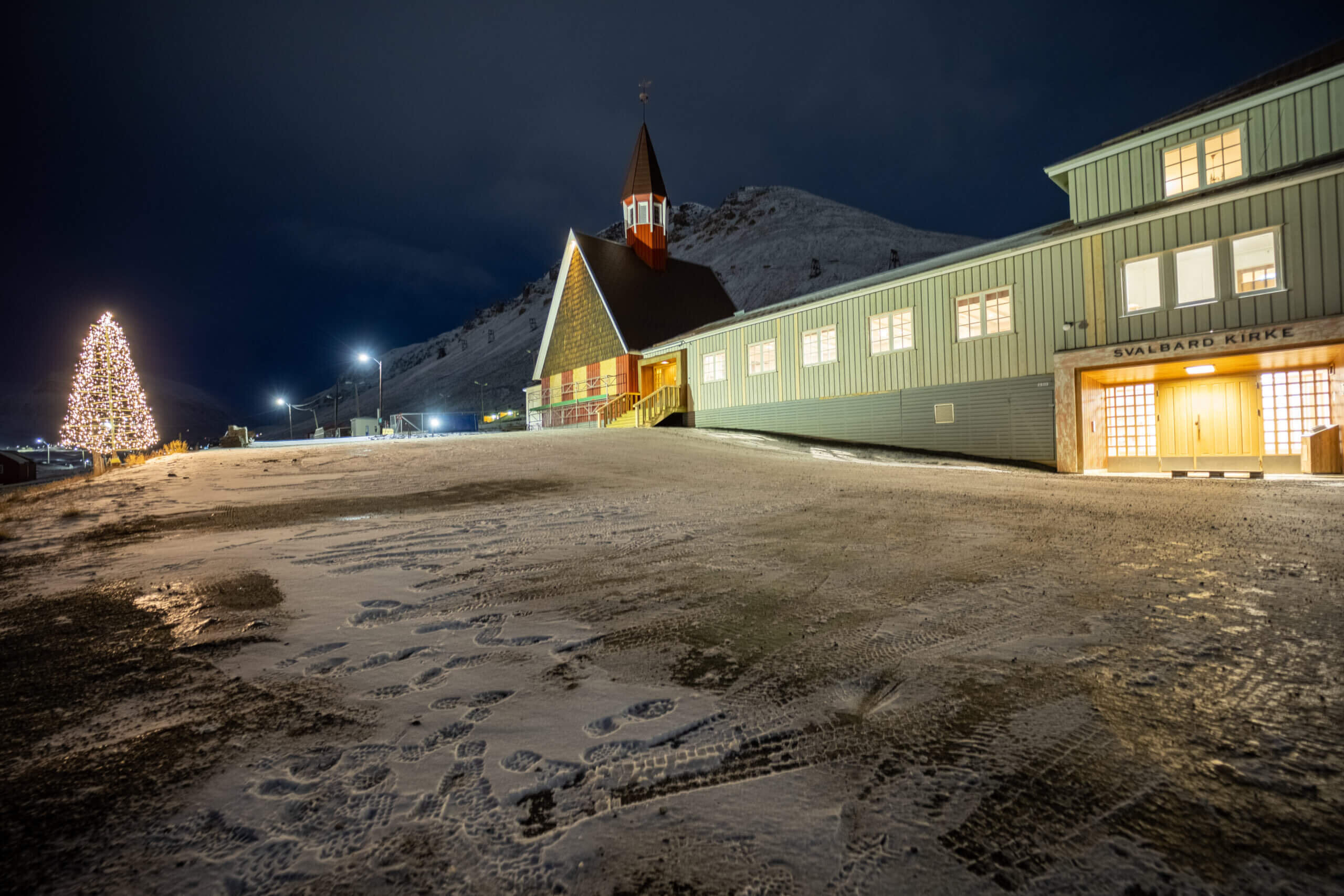
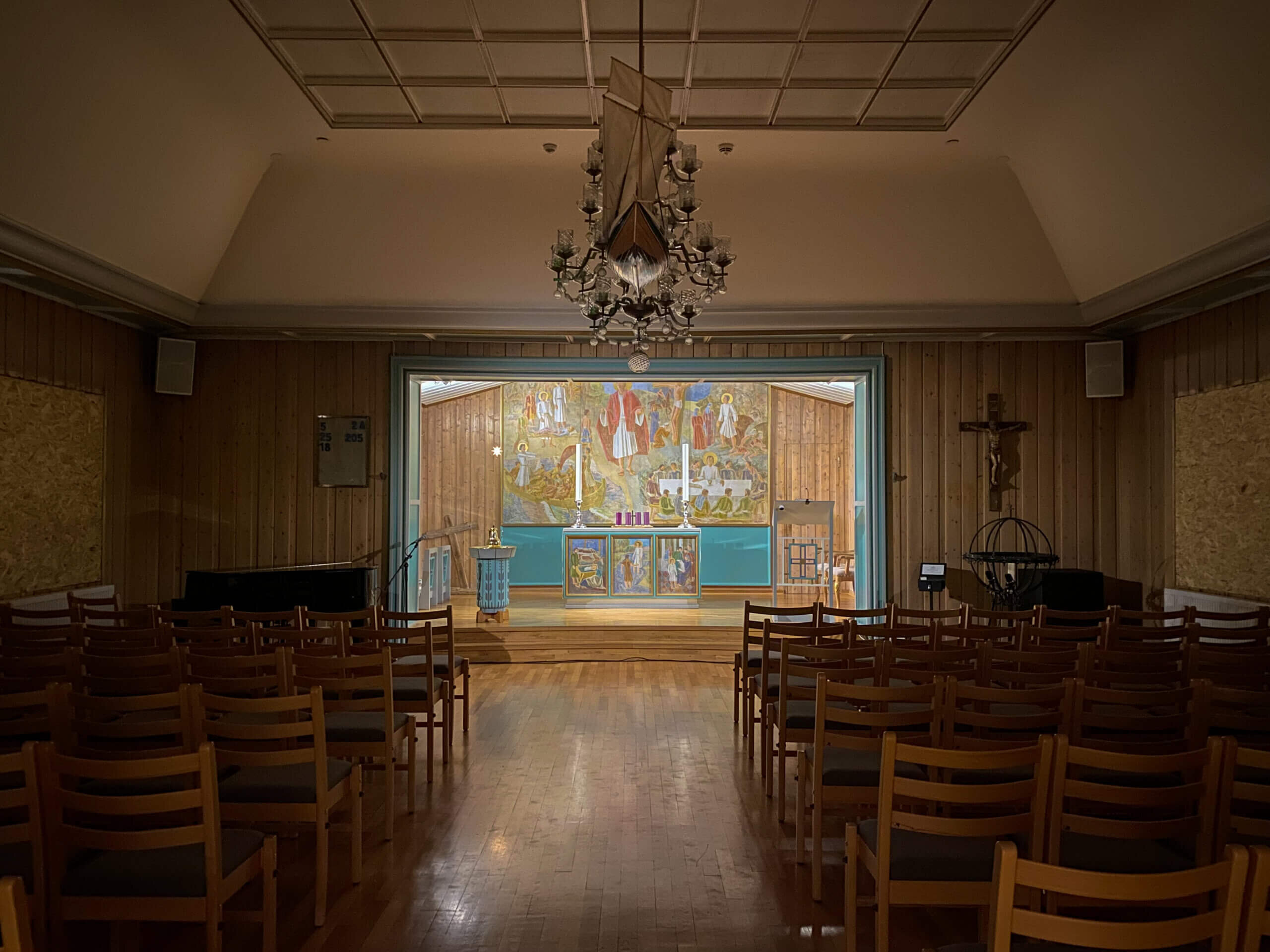
For dinner I eat at Kroa again, but this time I opt for the nachos — a great choice. After dinner I walk to Svalbardbutikken, the only grocery store in Longyearbyen, and then visit some of the local shops for some souvenirs. It’s now time to head back to the hotel and start packing to leave tomorrow. The walk back to the hotel every night has been a nice way to end each day. Along the road to the hotel, it is quite common to see reindeer — either on the mountainside (just shine your headlamp toward the mountain and you will see a ton of eyes in the light) or crossing the road.

Day 5
I begin my journey back to Munich today. After breakfast, I finish packing, say my goodbyes, and wait for the airport shuttle. It is raining today and the temperatures will remain above average for a few days. I got lucky and visited right between two periods of abnormally high (34° - 43° F or 1° - 6° C) temperatures. The shuttle drops us off at the small, northernmost airport in the world (with regularly scheduled public flights) where baggage drop and security is a breeze.
On the first flight from Longyearbyen to Tromsø, the pilot announces that the northern lights are visible outside. As we fly south I begin to see daylight for the first time since arriving on Svalbard. After a layover in Tromsø, I fly to Oslo for another layover before I arrive back in Munich. It has been a great trip and I will definitely visit again.
Want to get a more in-depth look into what life is like in Svalbard? Cecilia Blomdahl is a Swedish YouTuber, TikToker, and Instagrammer who has lived on Svalbard for years and documents her life (and her cute dog Grim and boyfriend Chris) living near the north pole. You can follow her on YouTube, Instagram, or TikTok.
